The World Championships
We take a look behind the scenes
Fell ponies doing endurance
Owners share their stories
Build core strength
Transform your riding


Summer 23 Official members' publication for Endurance GB
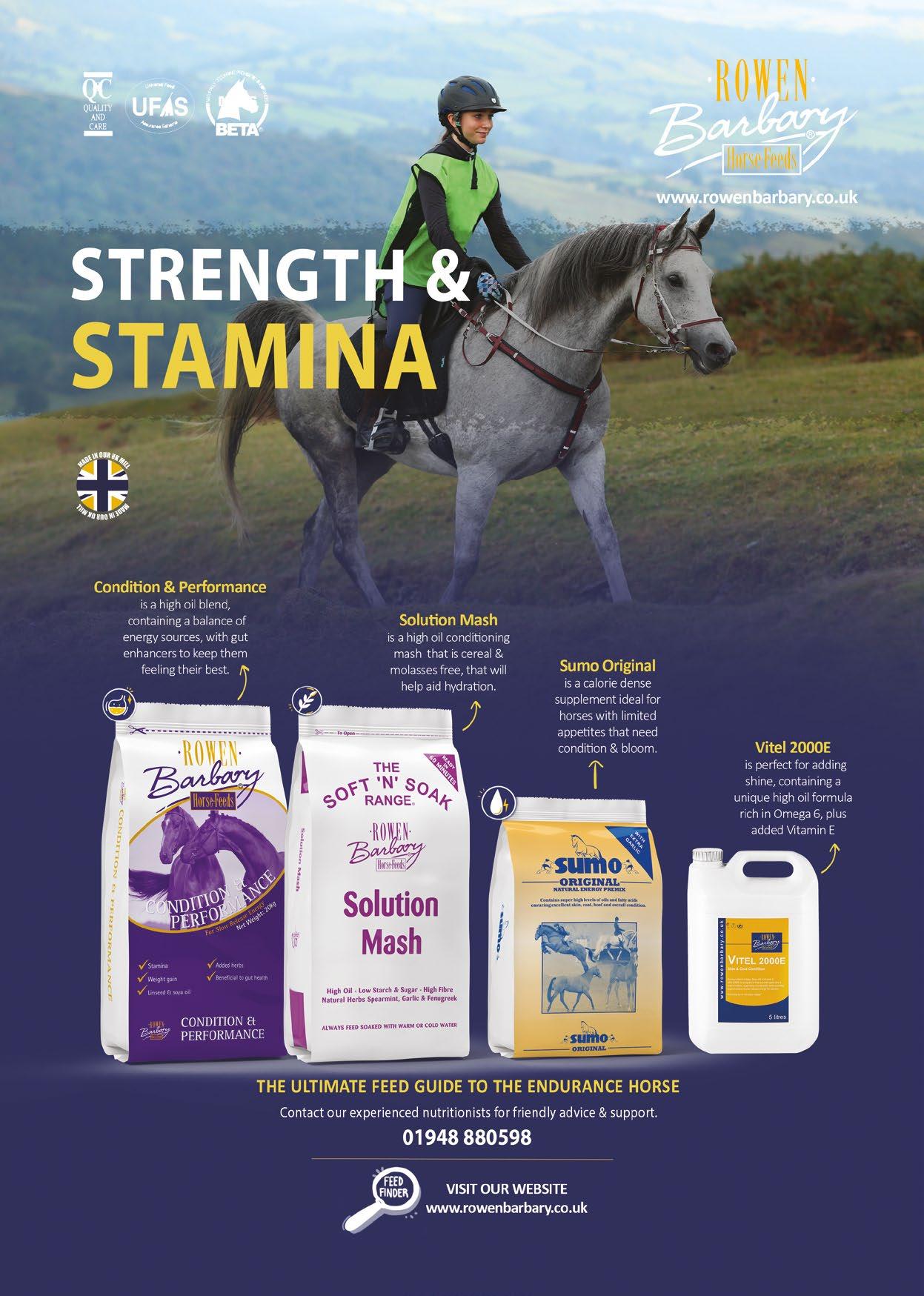

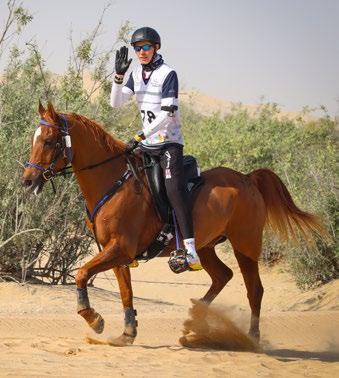

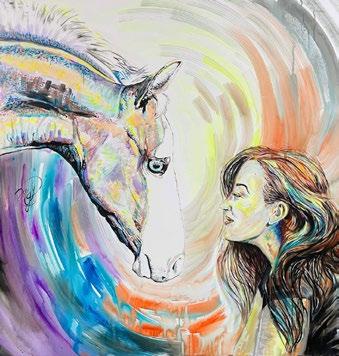

From the office Sponsor focus Scottish Endurance Riding Club news Obituaries Follow us @EnduranceGB EnduranceGB @endurancegbinsta Volume 20 – Issue 2 Endurance GB Office Administration Endurance GB Office, Abbey Park, Stareton, Kenilworth, Warwickshire, CV8 2RP t: 02475 313353 e: enquiries@endurancegb.co.uk Publisher Unit C, Northfield Point, Cunliffe Drive, Kettering, Northants, NN16 9QJ t: 01536 527297 e: info@matrixprint.com Designed by Matrix Print Consultants Ltd Production Editor Nicky Moffatt e: editor@endurancegb.co.uk Advertising Sales Manager Matrix Print Consultants Ltd Emma Barrett t: 01536 527 297 e: e.barrett@matrixprint.com Deadlines Copy Dates to Editor for future issues of Endurance: Autumn 23 copy deadline is 20th July. The views and opinions of the writers are not necessarily those of the editor, Matrix Print Consultants Ltd or Endurance GB. Endurance magazine is fully protected by copyright and nothing may be reproduced wholly or in part without the permission of Endurance GB and/or Matrix Print Consultants Ltd. Cover Photo James Dickinson and Magdy competing at the Worlds Photo courtesy of Marijke Visser 8 22 24 ISSN 2516-2349 In this issue Regulars Western Hills World Championships Winter League results 7 18 46 Reports Features 36 29 40 Promoting our sport Interview with James Dickinson The rider’s core Train for the terrain Photo competition finalists so far Breed focus: Fells The Druimghigha Stud RoR news Understanding integrated awareness Gauging the efforts of our horse in work Dehydration Feeding advice from Allen & Page What’s happening at Red Dragon 42 6 8 10 12 14 16 22 24 26 30 32 38 44 contents 3
Welcome to the Summer 2023 edition of your magazine which we hope you’ll enjoy.
We’re so lucky to have access to several experts who are all willing to write features for Endurance magazine and this issue certainly doesn’t disappoint.
Every endurance rider knows the importance of needing good core strength to go the distance and on page 10, Clare Gangadeen from RiderCise helps us understand how to make the most of your posture in the saddle.
Turn to page 14 to enjoy looking through our first photo competition finalists – perhaps your photo is there? If not, there’s still time to enter, so please email me – editor@endurancegb. co.uk with a clear, high resolution image, your name and your horse’s name, the venue where the photo was taken and when, and who it was taken by.
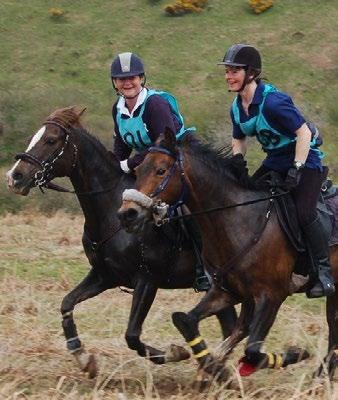
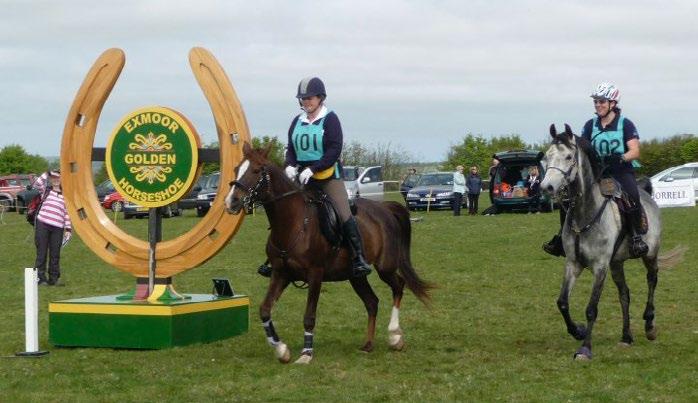

Cast your mind back to February this year when Team GB riders headed off to Butheeb (UAE) for the FEI Endurance World Championships – what an incredible achievement and experience for everyone involved. We caught up with not only the riders, but also some of the team behind the scenes, and you can hear all about their experiences on page 18.
Last September, I attended the Bonham Ride near Stourton in Wiltshire where I spent the day as a vet writer. One of the vets that day was Nick West and after meeting Nick, I asked him whether he might be interested in writing a feature for the magazine. Wonderfully, Nick said yes, and on page 30 he expands on the subject of dehydration. If we have a repeat of last year’s summer hot spell, then any new cooling advice will be welcomed by endurance riders.
Thirteen years ago, back in 2010, I was
of Endurance Magazine
fortunate enough to take part in the Golden Horseshoe Ride aboard Barbara and Nic Wigley’s wonderful mare Zara. Then, I was invited back the following year to take part in an editors’ ride, this time astride Nikki Routledge’s gorgeous Mimi. Delving into the archives, I found these lovely images of me and Zara in action on Exmoor, riding alongside (I think if my memory serves me well) Carolyn Thomas, and crossing the famous Horseshoe finish line with Rachael Claridge. Both images were captured by Ian Wigley.
Remember to get in touch with me if you have any feature ideas or suggestions for future issues. I am always delighted to hear from you and receive any feedback.
See you next time.
Nicky
Nicky Moffatt | Editor
A warm
welcome welcome | endurancegb.co.uk from the editor 4
Endurance GB Board of Directors
Chairman & Sponsorship Director
PHIL NUNNERLEY
T: 07860 323968 / 01761 221561
E: philnunnerley@endurancegb.co.uk
Vice Chair & Finance Director
CHRIS WRAY
T: 07856 500519 / 01600 860938
E: chriswray@endurancegb.co.uk
H&S & Safeguarding Director
AMANDA WOOLCOMBE
T: 07771 362105
E: amandawoolcombe@endurancegb.co.uk
Welfare & Disciplinary Director
JOHN COLDICOTT
T: 07932 140069
E: johncoldicott@endurancegb.co.uk
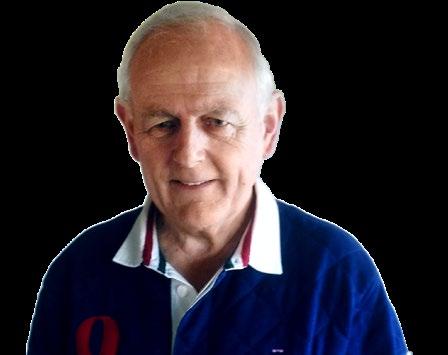
International, Young Riders, Para Riders, & Coaching Director
PHIL NUNNERLEY
T: 07860 323968 / 01761 221561
E: philnunnerley@endurancegb.co.uk
Sustainability Director and SERC nominee
ALISON SEGGIE
T: 07860 323968 / 01761 221561
E: philnunnerley@endurancegb.co.uk
Marketing, PR, Comms & Groups Director
HEATHER GILES
T: 07587 098079
E: heathergiles@endurancegb.co.uk
Operations, IT, Office & Volunteers Director
SHELLEY BATES
T: 07760 264619
E: shelleybates@endurancegb.co.uk
Directors of Endurance GB are volunteers, so please be patient and considerate with any queries. Most Directors work full time elsewhere and are not always available during working hours. No calls before 9am or after 9pm please.
Dear Members,
We must accept that increasing questions are being raised from both the public, and indeed by some of us involved in equestrian sport, around the welfare of horses in sport. We must take action to strengthen our social licence around the involvement of horses in sport. The future of equine sport depends on all of us, individually and collectively, demonstrating that we will always prioritise the health and happiness of our horses. The FEI Equine Ethics and Wellbeing Commission has published a report and recommendations which provides a vision for a ‘Good Life for Horses’ necessary to sustain equine participation in sport now and in the future. There will be opportunities for us all to participate in the debate.
The FEI have also updated their Sustainability Handbook created with the aim of aiding and encouraging event organisers to implement sustainability initiatives which help reduce the negative environmental impact of events. British Equestrian are developing a strategy and are currently gathering opinions on issues such as water availability, land stewardship, energy, emissions, waste and resources. We must recognise that we will need to consider the impact our sport has on the environment and develop plans to address some of these key issues.
I recognise that the escalating cost of living is of immediate impact and inevitably will challenge the level of membership renewals, ride entry numbers, and how far members are prepared to travel to participate. The impact this will have on our income is difficult to predict, while at the same time our costs (insurances, professional fees etc) continue to rise. Increasing membership is critical to sustaining our financial viability and we all have a responsibility to encourage and welcome new members into our sport.
Summer is just around the corner and there are suggestions of another long spell of sunshine ahead. Enjoy the wonderful countryside our ride programme offers! And you, and your horses have fun.
focus
Future
Phil5 future focus | endurancegb.co.uk
Phil Nunnerley | Chair of Endurance GB
Promoting our amazing sport
By Ann Featherstone
It’s always a challenge ensuring riders know about our rides and what’s coming up, and trying to attract new members.
Endurance GB’s North & East Yorkshire Group have been extra busy out meeting new potential riders and spreading the word. I, as Group Secretary and committee members Janet Bowes, Tracy Thompson, Kim Offord, Samantha Prosser-Higdon, Gill Richardson and Chair Robert Blane are North & East York Group’s marketing sub-committee and we have taken up the challenge to be out and about at every opportunity promoting the Group and Endurance GB.

We have a ride list leaflet printed each year which is sent out to the local tack shops, feed shops or anywhere else that will allow us to leave a leaflet. We also have stands at the local tack sales and day-to-day postings on our Facebook page.
This year we invested in some nice pens with the Endurance GB logo on to give to members along with some individual personalised key rings. The key rings have a photo of the rider at an Endurance GB event with the Group logo on the reverse. Each member received one of these at the Group’s AGM and they have been very well received.
This year saw the opportunity to have a stand at the popular local Middleham Race Yard open day. This event is quite new but an ideal opportunity to be where there are lots of people interested in horses. Always willing to take up the challenge, Janet, Samantha and Kim and I had a few Zoom planning meetings, a detailed check list of what was needed was created and off we went to prepare for the event. A quick email went off to Heather Giles, Endurance GB’s Director of Marketing, PR & Comms, with an SOS for some resources. She didn’t disappoint and within a few days a box arrived with leaflets, pens, magazines and a branded Endurance EGB tablecloth. I had an inspired thought about bunting which generated another quick email to Heather and within a few days there was bunting.
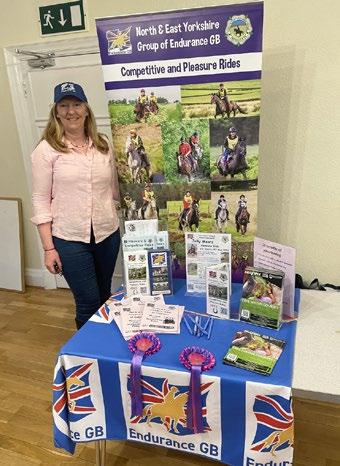
It was an early start for the team, especially as it was Good Friday. We met at the venue on a very crisp morning and got the gazebo up and thankfully weighted down as it was a little
windy. Kim brought a saddle and a saddle bag and prepared with lots of resources we were ready. There was a bucket full of little sweet bags ready for the kids while we talked to the riders.
A steady flurry of people visited during the day, with special interest of course in the RoR classes. I had produced some specific RoR leaflets and was really surprised how much is on offer for RoR, so it’s definitely worth a look on clubhouse. The stand for the day cost £40 and we just had to supply our own equipment, risk assessment and a copy of our insurance.
Team up with the Pony Club
Every opportunity we get, we do team up with the Pony Club and it’s a great way to attract younger riders coming through. Robert, our Chair, is also the Pony Club Endurance Chair and working together can only help market our sport.
Volunteering day
The opportunity came up to have a table at the local volunteering opportunity event. This stand was free, we just had to buy a cup of tea and a slice of cake, and we were more than happy to oblige with that! Again, another opportunity to be seen and promote volunteering in endurance. It was a busy event and lots of leaflets were given out.
Intro to endurance evening
A huge thank you to all the people who supported our ‘Intro to Endurance’ evening at Thirsk. We had nearly 60 people joining us, and we were given useful information by Anna from TopSpec about how to feed our horses and the importance of knowing your horse and how we can improve performance. The second half of the talk was from Catriona Moon who vets regularly at National Rides. Catriona had the task of explaining the ‘vetting’ which takes place at the competitive rides. If you’re doing a pleasure ride alongside a competitive ride, riders have to present to the vet and trot their horse up and we were given lots of tips to make the process run smoothly. Thank you so much Anna and Catriona for your time and to all the people who travelled to Thirsk to meet us.
Spread the word
There are still so many people who don’t know about us. Questions are often focused around:
• Do you need your own horse?
• Do you go off in groups?
• Do you need special equipment?
The days are long, and a lot of preparation goes into these events, but it’s worth it if we can attract new riders and volunteers and support our Group, Endurance GB and our sport.
Promoting our sport
features | endurancegb.co.uk 6
Western Hills Challenge
Western Hills Challenge
Get set for an exciting new challenge on offer this year. Here’s what you need to know.
Atotal of £600 in prize money is being offered by a generous sponsor for a new ‘Western Hills Challenge’ for riders who complete a ride at the following events:

• Clocaenog in July
• Long Mynd in August
• Red Dragon on 29th-31st September
The Challenge will be undertaken in three categories:
• Open/Advanced Challenge
• Novice Challenge
• Pleasure Ride Challenge
The details of each Challenge are shown below.
Open/Advanced Challenge
The Open/Advanced Challenge will be open to entries from current full members only. The same combination must successfully complete a graded ride at each of the three events listed above.
Placing in the Open/Advanced Challenge will be determined from the highest total performance formula score from one graded ride at each event. At Red Dragon, more than one graded ride can be entered over the three days of the event, but only the highest score will be counted. Ties will be separated by lowest total pulse over the three rides.
Total prize money of £250 will be available to the first three places in the Open/Advanced Challenge: 1st: £125, 2nd: £75 and 3rd: £50.
Novice Challenge
The Novice Challenge will be open to entries from current full members only, where both the rider
and the horse must be at novice level for all three events. The same combination must successfully complete a graded ride at each of three events listed above.
Placing in the Novice Challenge will be determined from the highest total performance formula score from one graded ride at each event. At Red Dragon, more than one graded ride can be entered over the three days of the event, but only the highest score will be counted. Ties will be separated by lowest total pulse over the three rides.
Total prize money of £250 will be available to the first three places in the Novice Challenge: 1st: £125, 2nd: £75 and 3rd: £50.
Pleasure Ride Challenge
The Pleasure Ride Challenge will be open to entries from current full members, associate members and supporters. The same combination must successfully complete a pleasure ride at each of the three events listed above.
Placing in the Pleasure Ride Challenge will be determined from the highest total distance accumulated from pleasure rides at each event. At Clocaenog and Red Dragon, more than one pleasure ride can be entered and the total distance
will be counted. Ties will result in the prize money being split equally.
Total prize money of £100 will be available to the first three places in the Pleasure Ride Challenge: 1st: £50, 2nd: £30 and 3rd: £20.
Announcement of winners
Those placed in the Western Hills Challenge will be informed and given their prizes by the end of October at the latest. The results will be announced in the next available Endurance GB quarterly magazine.
Jane Stewart, organiser of the Clocaenog Ride says: “After a break of many years, in 2021, the Cheshire Group resurrected a National Ride in Clocaenog Forest. This forest ride sets out from a quiet venue near Ruthin in North Wales – it’s not that difficult a drive! I am thrilled that Clocaenog is the first of the three events picked for this new ‘Western Hills Challenge’. The routes are gate free and provide wonderful views of the beautiful Welsh countryside. As well as the competitive rides on Saturday 15 July, there are pleasure ride options on both the Saturday and Sunday. I hope the Western Hills Challenge will encourage members to visit Wales for a great weekend of riding.”
Sally Toye, who is organising the Long Mynd Ride for the second time this year, commented: “I am excited that Long Mynd Ride is part of this new challenge that honours the people who are tackling the hills and challenging themselves and their equine partners. After 30 years of riding such rides, I am delighted this is being rewarded.”
John and Jane Hudson, organisers of the British Horse Feeds’ Red Dragon Festival, added: “It will be a pleasure to welcome all competitors who qualify for the new Western Hills Challenge, having competed at the Clocaenog and Long Mynd Rides first. We can offer first class facilities at the venue and excellent riding for those who make the journey to Builth Wells.”
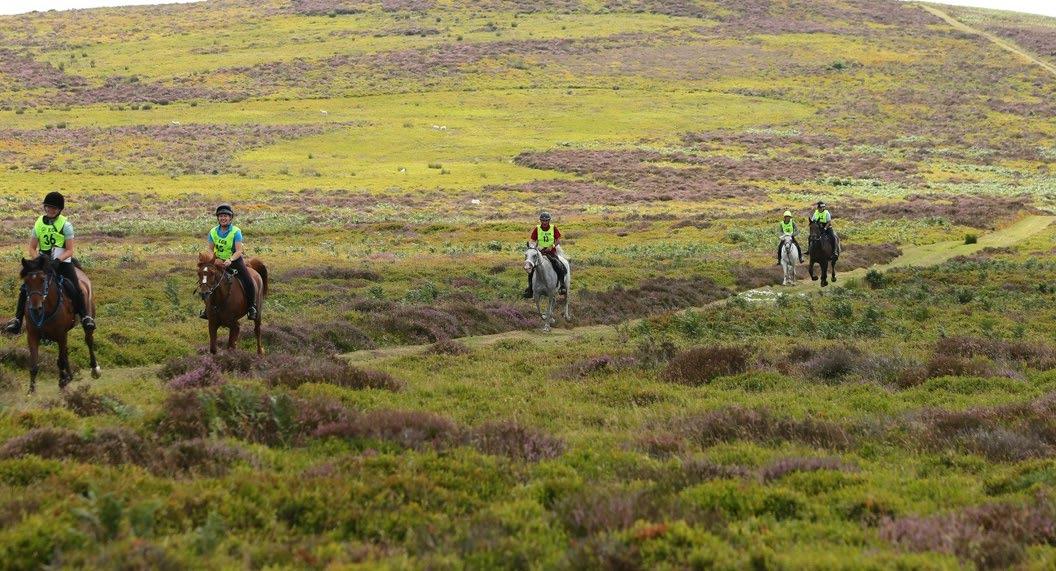
western hills challenge endurancegb.co.uk | reports
7
Enjoying the journey
Fresh from his trip to the World Championships, James Dickinson takes time out to tell us more about his endurance experiences so far.
A few of the special ones
Igrew up on a dairy farm in Derbyshire, and horses have always been a big part of my life. My grandad also breeds and has racehorses in training, so I got involved with that too. My mum started with endurance when I was young, so naturally I got involved with the sport. I first started having riding lessons when I was four years old and progressed onto my own pony a few years later. Since then, I’ve enjoyed various disciplines and took part in Pony Club activities when I was growing up. I did my first GER Endurance GB ride in 2008 on my Arab X Connemara, Duke and have since had the pleasure of taking many other horses on rides.
We bought Duke when I was 13 years old and he was the grumpiest pony but we had many happy years together. Our best result was a grade 1 in the 64km class for the Northwest interregional team at Barbury Castle in 2010. He also enjoyed his jumping and although he was very strong, we also had fun, whatever the discipline! We sadly lost him in 2021, when he was the grand age of 31 years old. After that, I was lucky to ride Bonnie Safira for her owner Jenny Doxey. Saffy was again very strong and determined, despite only being 15hh. We competed up to CEI 2* 120km and went to Mont Le Soie with the development squad in 2012.
Magdy came into my life in 2015, from his breeder Kathy Etherington at Al Waha Stud. He was unbroken, feral and rising six years old. He stands at 16.1hh, so was the perfect height for me, as I’m very tall! My partner Katie Bedwin and
I backed Magdy through the winter of 2015/2016 and he did his first novice GER ride in 2016. We never want to rush our horses, so we have taken Magdy slowly up through the levels and he did his first CEI 3* in 2020. Magdy has a great personality for endurance, he is very laid back and loves his job. He always gives me a great feeling when we are out training or competing.
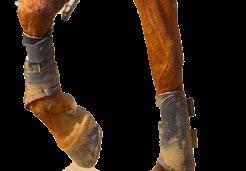
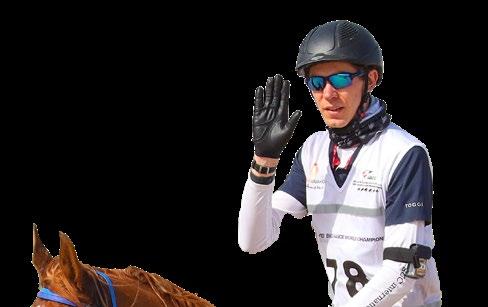

Team tactics
I’m lucky to have a very supportive team behind me and I am so grateful to every person who has helped my endurance journey. Katie is also an endurance rider and has ridden up to CEI 3*. We are a great team and are lucky that we share the same passion in endurance. I get just as much enjoyment out of crewing Katie as I do riding. My mum, Paula Lynam, has crewed me through the levels and I appreciate her ongoing support. Katie’s parents, Rob and Lucy are also
Interview
All images courtesy of Marijke Visser
8 features | endurancegb.co.uk interview
hugely vital in our success both at competitions and always being available to look after the horses at home when required. My crew for the World Championships also included Alex Bedwin, Nikki Brown and Alice Ingram, and without them the result would not have been possible!
Most of our time outside of work is spent doing something horse-related, but I enjoy running, and use it to increase my personal fitness. We have two Whippets, Willow and Ted, who love joining me. I also am an avid plant grower and I have over 70 house plants…much to Katie’s dismay!
Happy horses
I’d like to think our horses are very happy and we do as much as we can to keep them content and healthy. We currently have four horses and they all live as a ‘gang’ with turnout in 10-acre fields. They spend at least 12 hours out a day throughout the year and we try to give them more in the summer months.
We keep their work varied, as we think this not only helps them mentally but physically, too.
All our horses enjoy jumping and we have regular flatwork lessons. We also believe diet is another very important part of our horses’ lives.
We focus our training on long and slow work, with lots of variety to help strengthen the horses in all areas. We’re lucky to have access to different training grounds and try to utilise these as much as possible. We prefer to use natural tracks as opposed to an artificial surface, to emulate competition as much as possible, and try to expose our horses to many different types of terrain, to again, hopefully prepare them better.
Schooling is also a very important part of our horses’ routine, with each horse being schooled at least twice a week. We use pole work to help improve the horses’ flexibility and proprioception. It is our opinion that fast work increases the risk of injury, so we choose to avoid it in training.
As Katie and I have full time jobs, we can only run a small team of horses, but the ones we have are very special. We prefer to buy our horses unbroken, as we can get to know them from the start and enjoy training them from an early age. We believe a laid-back nature is very important
to enable horses to cope with the atmosphere of high-level competition. We like to look at the bloodlines of our horses as, although it’s never a guarantee, it gives a good idea of the potential that a horse may have. Generally, we look for Arabians with a good amount of bone, good feet and a strong frame. Because we ask a lot of our horses’ bodies, we believe these attributes help their longevity and soundness.
We believe resting our horses is just as important as the fitness training, to allow them to fully mentally and physically recover from the stresses of competition. So, Magdy is currently having 12 weeks full field rest after the World Championships in Butheeb, UAE. We will then slowly bring him back into full training, with the view of hopefully being part of the GB team heading to Ermelo, for the European Championships in September 2023. That said, Magdy is our main priority, and he has already achieved more than we ever thought was possible. I am also looking forward to crewing Katie and her new horse, Gerko De Tenelle, as they progress up through the levels.
Get involved
I’d encourage any rider to have a go at endurance. I think it’s a misconception that you need an Arabian to take part and reach the higher levels. With the right training, I believe you can take any horse to advanced level. I also think that riders competing in other disciplines could benefit from taking part in endurance to help both horse and rider become fitter and stronger. From our experience endurance is the friendliest discipline, so, I would urge anyone new or those wanting to progress further to ask as many questions as you can. I really hope we can encourage more people to get involved and help our sport to grow.
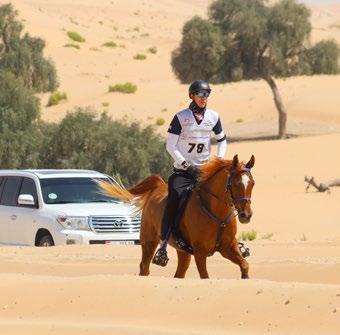
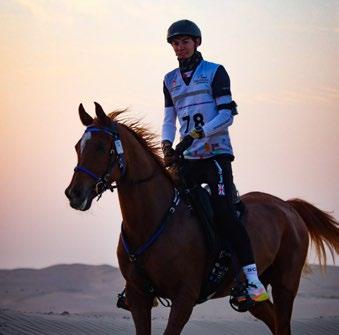

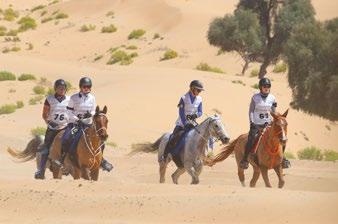
interview
9
“Magdy has a great personality for endurance, he is very laid back and loves his job”
The rider’s core
Clare Gangadeen from RiderCise (www. ridercise.co.uk) helps us understand more about good and poor posture in the saddle and how you can maximise it to your benefit.
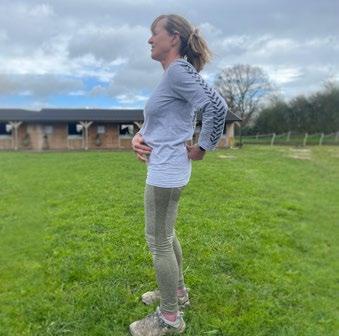
The word ‘core’ is used heavily in the equestrian world, but few know what it really is, how to engage it and how it feels when you do. This is because it’s never really been truly explained to you, and most have never felt it in action.
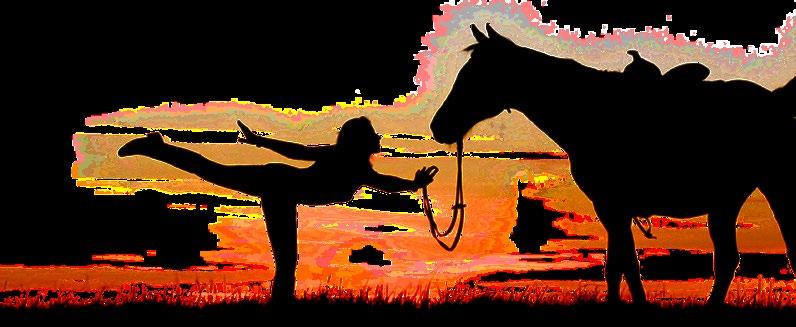
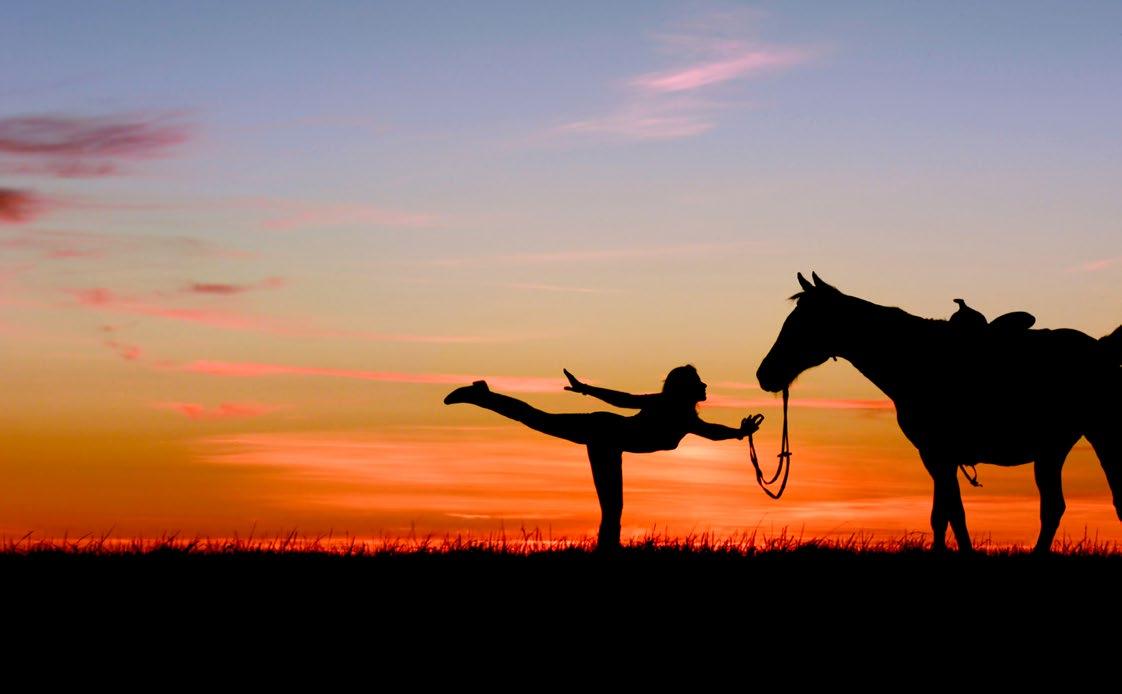
Contrary to belief, your core consists of roughly 35 muscles which are in the anterior (front) and posterior (back) portion of your body. It does include your abdominal muscles, but it is not purely those muscles alone that are defined as your ‘core’ muscles.
For your core to work, all these muscles must operate together supporting, giving, resisting and contracting.
How posture affects your core function
Everyone has a ‘core’ but your ability to engage it or for it to function optimally depends on your posture. If you have good posture then your core will be able to function at its best. If your posture is compromised, then your core will not be able to function correctly. Postural imbalances mean that muscles are either lengthened/weakened or shortened/tight.
The optimal or ‘correct’ posture is proper alignment of the spine and body. Alignment which maintains the three normal back curves in the cervical (neck), thoracic (upper part of your back) and lumbar (lower part of your back).
Looking at the body from the side, imagine there is a straight line from the centre of the shoulder, through the hips and knees and the back of the ankle bone. Additionally, earlobes should line up with the centre of the shoulders which should be held back slightly and parallel with the hips.
Posture types
The most common static posture types are:
• Lordotic posture (anterior pelvic tilt)
• Kyphotic posture
• Forward head posture
• Sway back (posterior pelvic tilt).
Lordotic posture
A lordotic posture has an increased lumbar lordosis (curvature of the lower back) and increased anterior tilt of the pelvis (pelvis tilting forward). Due to the increased tilt of the pelvis, there is an increased flexion (bend) of the hip joints.
The knees can be in hyperextension (excessive straightening/locking at the knee joint) which as a result can cause plantar flexion in the feet (weight in toes). Typically, a result of bad postural habits and weakened muscles.
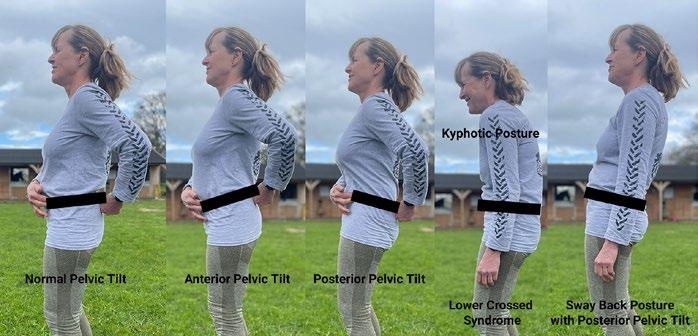
Training
10 features | endurancegb.co.uk training
An example of a natural pelvic position
Kyphotic posture
Kyphotic posture is an increased curvature of the thoracic or sacral regions of the spine. It is typically due to bad posture but can also be related to age and conditions; Scheuermann’s and Congenital. Please note, these conditions are severe deformities of the spine and not typical in the everyday person.
This type of posture can lead to upper crossed syndrome (UCS). UCS is a muscular imbalance in your shoulders, neck and chest which results in pain/discomfort and reduced functional movement patterns. It is typically caused by an overly sedentary lifestyle and/or poor posture.
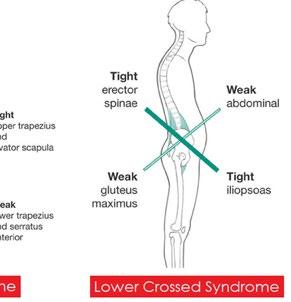
Forward head posture
FHP, as it’s otherwise known, is a poor habitual neck posture which will also involve thoracic kyphosis, due to the slouched forward shoulders and rounding of the upper back.
Due to the often association of thoracic kyphosis, this posture also results in upper crossed syndrome.

Pelvic tilts can be associated with this posture type but it’s not a given. The pelvis can be neutral however the individual will suffer from neck muscle pain, fatigue and lack of blood flow which can lead to several issues such as headaches, and impaired upper body muscle performance.
Thoracic kyphosis is excessive antero-
posterior (front of body dipped towards back) curvature of the thoracic spine (upper back) – rounding of the upper back.
Sway back posture
With a sway back posture there’s an increase in the posterior tilt of the pelvis and the trunk with a thoracic kyphosis, in comparison to neutral posture. Typically, a result of bad postural habits and weakened muscles.
This posture is associated with an increased activity of the rectus abdominis (‘six-pack’ muscle) and decreased of the internal obliques (side muscles of abdomen) and the Iliopsoas (psoas and iliacus muscle group) and gluteus maximus (large bum muscle)
your horse freely.
Because of the excessive curvature in the lumbar, the back is compromised and there is no ‘natural’ curve in the lower back which inhibits the spine’s ability to absorb shock. This can lead to pain over time and even compromise the structure of the spinal discs. You may also stick your chin up and/or forwards
Posterior pelvic tilt
A posterior pelvic tilt (PPT) is when the pelvis is rotated backward which causes the back to be pulled downwards giving the appearance of a flat back/flat bum.

If you have a PPT you may find that you round your shoulders and carry your hands forwards, collapsing through the chest and looking downwards (think slumping in a chair). You will often feel left behind in the saddle and will rely on your reins for balance as you are not able to engage your core and lift your chest high.
Because of the slumping type posture, the back is compromised and there is no ‘natural’ curve in the lower back which inhibits the spine’s ability to absorb shock. This can lead to pain over time and even compromise the structure of the spinal discs.
In summary
Many of the challenges riders face in the saddle are because their static posture is compromised.
Challenges such as…
• Collapsing through transitions
• Leaning/wonky in the saddle
• Losing a stirrup or feeling like you are slipping to one side
• Reliant on the reins and/or being pulled out of the saddle by your horse
• Striking off on the wrong lead in canter
• Hip, knee, ankle, shoulder and back pain.
Anterior pelvic tilt
An anterior pelvic tilt (APT) is when the pelvis is rotated forwards causing an increased curve in the lumbar (lower back) and an appearance of a ‘bulging’ stomach.
If you have an APT it will be extremely difficult to sit neutrally and stabilise yourself through your core, especially through downward transitions. You will also feel locked through your hips and unable to move with
These are all symptoms that your body is not functioning optimally. It can be easy to focus on these symptoms rather than looking at the bigger picture – your posture. If you try to resolve the symptom you will not correct the cause, but simply re-direct that imbalance elsewhere in your body.
There is a direct connection between your posture out of the saddle to in the saddle and how you function on the ground to how you ride.
To improve your riding, to allow your core to function it’s important to see the bigger picture. We all have a core, so take a step back and assess how your posture is affecting its ability to function.
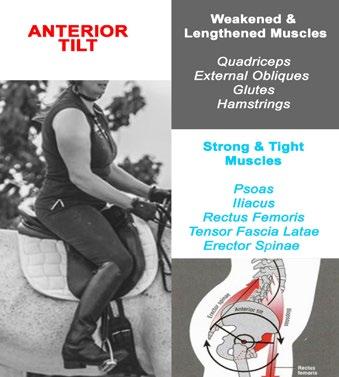
11 training
Train for the terrain
Dartmoor is an ideal place for endurance training. It has a wide variety of terrain, so you not only have the open moorland, best enjoyed in good weather, but also a fantastic choice of woodland tracks, bridleways and byways. Our training on the open moor consists of slow, steady hill work, walking up steep hills to the tops, the ‘downs’, where we are able to step up the pace, trotting over uneven and rocky ground (our alternative to polework) and cantering whenever it is safe to do so.
Our interval training comes naturally as the terrain dictates the speed. If it’s gallops you are after, we have them, but I rarely gallop as there’s no need for the job we are doing – long distance at a steady pace. Downhill sections are usually negotiated at walk depending on the conditions under hoof, but there is great value in incorporating downhill trotting so that the horse becomes confident and balanced enough to cope with this when required to do so in a competition. An endurance mantra I once heard was that you should trot all the time, canter when you can and walk if you must.
Along the way we encounter feral ponies, roaming sheep, loose cattle and occasionally curious pigs, great for familiarisation purposes. We have to take water in our stride with puddles to splash through, streams to hop over, rivers to ford and bridges to cross, all essential skills for the endurance horse. Taking to the bridleways and woods, gate opening and shutting is another vitally important skill to master (I avoid dismounting like the plague!), and the quicker and easier we can complete this task the better. We ride along narrow, stony tracks above scarily deep wooded gorges in order to access long, steady uphill canters on grassy forestry tracks.
In short, Dartmoor has it all (apart from sandy beaches, but they aren’t far away if you need to train for that scenario) but before you all relocate down south, I have had similar super training ground in North Wales and the Shropshire Hills throughout our endurance career, but my heart lies here on Dartmoor.
Bridget Brown, HH Crystal Horses Stud
Riders who train their endurance horses on the moorland and downland tell us more about the benefits this terrain has to offer

Helen Newton and Rocky
First of all I would like to say that I am not an aspiring FEI rider, I have never competed beyond 80k and I am not here to teach my grandmother how to suck eggs. But I have been enjoying competitive endurance riding since the mid 1990s and long-distance riding prior to that,

with only five failed vettings in 125 Endurance GB/BERA competitions with five different horses, so I must be doing something right.
A wise old endurance woman (probably the same age as I am now) once said to me that her horse was as fit as he needed to be for the job he was required to do, in other words there is no point in over training. My aim is to have a horse who can easily complete 80k over two days, enjoy his work, come home sound and be unaffected physically or mentally by the experience, and this is where Dartmoor comes in.
Living on a working hill farm, halfway up a hill in the middle of the North Yorkshire Moors, certainly has its advantages as the horses, even when they are at rest, always have a basic level of fitness. Sadly, despite having 27 steps between the yard and the house, the same can’t be said for us humans.
Nikki and I usually bring the main horses back into work around Christmas time as Nikki and Sandy aim towards competing at the 80km plus level. Zeph and I only tend to aim at 40km or multi-day rides now. We usually start with a little loose lungeing and double lungeing on a hill to get the kinks out of them before starting
Training
Helen Newton & Rocky
features | endurancegb.co.uk training
Discover the Countryside
12
Moorland and Downland
with short rides out onto the moor behind us.
The horses always have a loose rein to encourage them to look where they are going and use themselves correctly whilst developing a fifth leg. The moor is rough, narrow rocky tracks leading to peat and heather moorland. Walking through sometimes knee-deep heather does wonders for their core fitness, especially as going out behind the farm entails approximately a mile of steady uphill going. Gradually, as the horses fitten up, we start to introduce more trotting, and then some canter work when they are fit enough to get up to the old railway line that stretches across the moors, or onto the top of the rigg where the ground allows canter.
Once calving and lambing are over, we start in earnest as the first bunkhouse riding holiday people start coming and the horses are kept busy taking guided rides out. All steady away but it pays dividends for basic core fitness. Once the cows are back outside, the boys are regularly used to move the herd to fresh grazing, which adds interest to their work. By the time we enter the first rides of the season they are fit even for the faster flatter rides, but if more fast training is needed we box them down to the beach.
Katie Bedwin
We are lucky to have the South Downs National Park about a 30-minute trailer journey away and use it as frequently as we can to increase our horses’ fitness. The South Downs are mostly rolling chalk downland, so it’s a great place to avoid the mud and have a good surface to train on. The hills in the area offer long climbs, so we take the horses up them at walk or trot to help increase their cardiovascular fitness. We also believe the hill work is a great way to strengthen the horses’ muscular-skeletal system, thus hopefully reducing the chance of injuries.
We aim to use the South Downs 3-4 times a
month as part of our horses’ training schedule. But if a horse is preparing for a particularly steep competition, for example when Magdy was preparing for Golden Horseshoe in 2022, we increase this to twice a week.
The South Downs are home to many rare species of bird, wildlife and plant, and offer some spectacular views, so it is a great place to forget the stresses of life and enjoy time with your horse. The South East Endurance GB group holds many of its rides across the South Downs, so why not come and join us!
Philippa Verry
Having Exmoor on my doorstep is fantastic and I feel it’s the ultimate training ground for the endurance horse. Consisting of three lines of large hills running east to west, riding north south encounters some serious hill work as anyone who has taken on the challenge of the Golden Horseshoe Ride will tell you.
The terrain varies hugely, ranging from really soft peaty ground to hard stone and loose stone tracks, with plenty of river crossings in between. This kind of going is ideal to get your horse not only really fit, but also confident



about tackling tricky going under foot that can change rapidly. Although sometimes it can only be ridden at a slow pace, there are plenty of lovely long canters to be had along the hill tops. Cheriton Ridge, included in this year's 80km Golden Horseshoe route, is a section of nearly 3km of canter with no gates.
For my horses, Stilton and Melitta, this terrain is the norm for them, so the bonus for me is that I feel confident that they can cope with just about anything thrown at them elsewhere. Yes, there are a huge number of gates, but on the positive side these can help to make your horse patient and well mannered (you hope) while negotiating some of the trickier ones.
The weather, well what can I say! From thick fog and heavy rain to blue skies and hot sun, sometimes you might encounter all of this in just one day. Quite a good test to see how well your horse copes with adverse weather conditions.
Exmoor despite its sometimes-tough environment, is outstandingly beautiful and for me, it’s just the perfect place for an endurance enthusiast.
training
“An endurance mantra I once heard was that you should trot all the time, canter when you can and walk if you must”
Philippa Verry
Katie Bedwin
13
Bridget Brown
Discover freedom and enter our
2023 Photo competition
We invited you to send in your images with the chance of winning a gorgeous rosette for your efforts. We’ll showcase more photos in the next issue, but meanwhile here are some of the wonderful entries…so far.
How to enter
Email your favourite photo to editor@endurancegb.co.uk Make sure to include your name, the name of the horse(s) and rider(s), the ride and photographer.
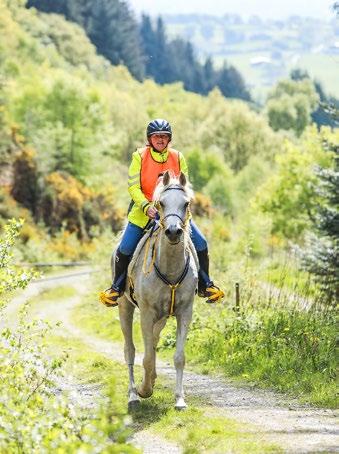

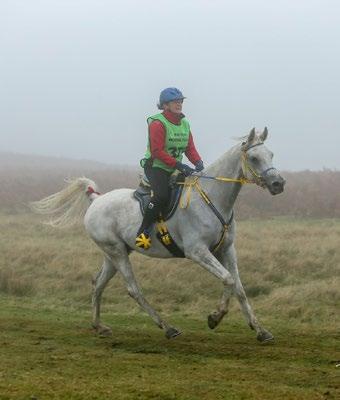
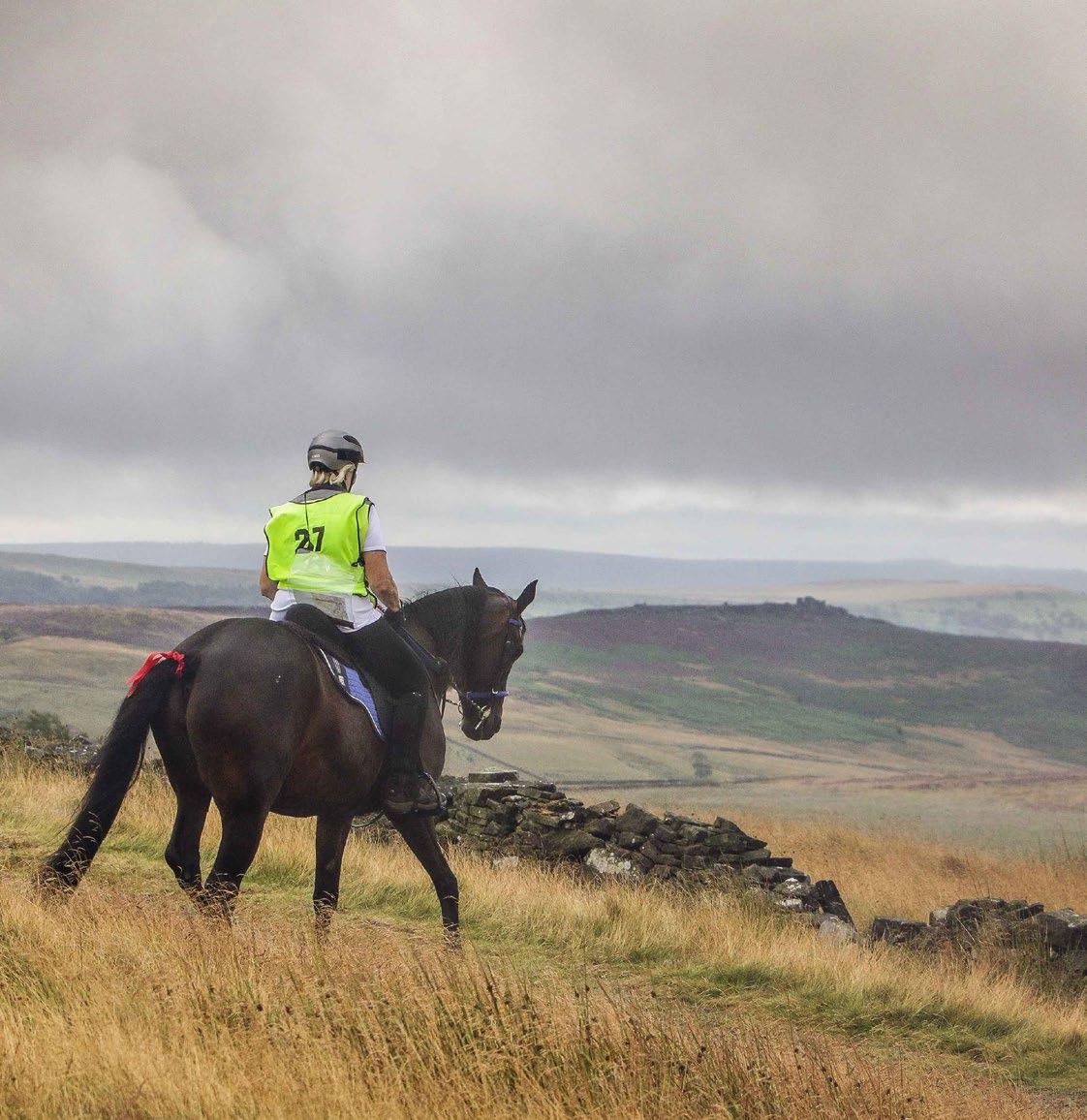
Submitted by Deborah Sneddon
Mum: Deborah Sneddon
Rider: Fearne Sneddon
(aged eight and youngest SERC competitor at time of photo)
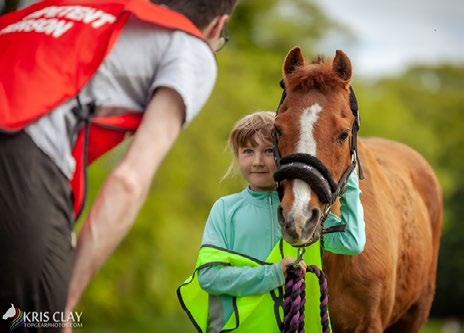
Pony: Crunchie
Ride: Tentsmuir
Photographer: Kris Clay
Photography
features | endurancegb.co.uk competition Competition
14
Submitted by Bethan Lewis
Owner and rider:
Bethan Lewis
Horse: Merlin
Ride:
Red Dragon
Photographer: David Saunders
Submitted by Rebekah Hirst
Rider:
Rebekah Hirst
Horse:
Ballyskeagh Darcy
Ride: Well Vale National ride, Aug 2022 (overlooking the lake, it was a beautiful day)
Photographer: Me!
Rider: Nicola Thorne
Horse:
Kamilcia (Mousey)
Ride: Dubai just before we went to Abu Dhabi, Butheeb, for the World Championships, taken in February this year
Photographer:
Marijke Visser
Submitted by Dani Hamilton
Rider: Dani Hamilton
Horse: Sparkles
Ride: Cirencester Park, 11 July 2021. This was our very first endurance ride and what got us hooked. We were part of the South West team, 32km and we got a Grade 1.
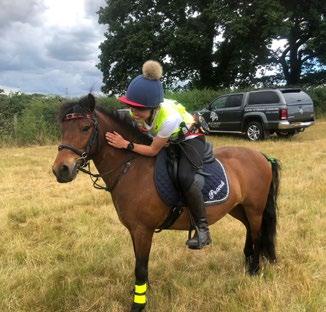
Photographer: James Hamilton
Submitted by Julie Jones
Owner and rider: Julie Jones


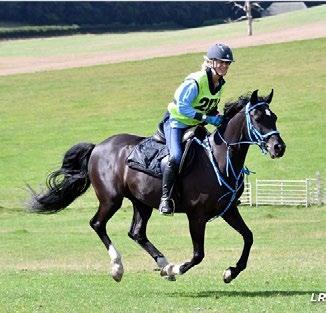
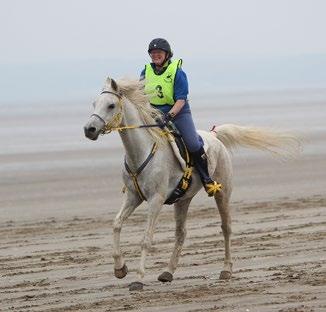
Horse: TM Valentino
Ride: Forest of Dean (41k) 19/3/23
Photographer: West End Photography
Submitted by Susan Hawes
Riders: Susan Hawes and David Hawes (Sabi Waseem) enjoying the freedom of movement

Horses:
Remynisce and Sabi
Waseem
Ride: Graffham Down
Photographer: LRG Photography
Submitted by Sue Horne
Rider: Sue Horne
Horse:
Oakthwaite Zahir Adam
Ride: Graffham Down
Photographer: LRG Photography
Submitted by Katie Synge-Curtis
Rider: Katie Synge-Curtis

Horse: Peanut
Ride:
Luffenhall Pleasure Ride
Photographer: Tom Synge-Curtis
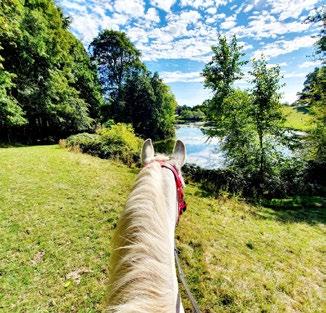 Submitted by Nicola Thorne
Submitted by Nicola Thorne
competition 15
Breed focus: Fells

This time, we look at one of Britain’s muchloved native breeds – the Fell pony – and talk to owners who compete their Fells in endurance.
Native to the north of England, namely the Cumbrian counties of Cumberland and Westmorland, Fell ponies are known locally as ‘galloways’. The Vikings used these ponies for ploughing and pulling sledges, as well as for ridden and pack work. From the 11th century they continued their pack work, carrying the likes of fleeces and wool, as well as food products, such as cheese, fish and meat and during this time they were also used for shepherding, hunting wolves that posed a threat to sheep.
Later, as industry developed, Fell ponies were used to transport materials from mines
and this continued well into the 20th century. Nowadays, the breed is a popular choice for both adults and children and many serve as the perfect all-rounder. Their fast walk, ground-covering trot and sure-footedness make them ideal for endurance and owners will tell you they seem to have a sixth sense when it comes to knowing which are the safest tracks to follow.
Nicola Patterson owns three Fell ponies

“My three Fell ponies are all very different, ranging from 12.2hh-14hh, and as an adult rider they all carry me more than comfortably. We live in Derbyshire and are members of the local Endurance GB group. We’re spoilt with some fantastic ride locations, with varied terrain. We also travel to neighbouring counties to attend some of their rides too. Tali, in particular, loves
the rides. On hills he’s so sure footed and steady, really concentrating on where he puts his feet and always looking after me. On the flat the ‘Fell trot’ takes over, keeping a constant pace for long periods of time. It’s amazing how athletic Fells are, and each of mine has learnt to pace themselves throughout the rides, always finishing with more to give. I’d encourage anyone to consider the breed as their next equine friend and enjoy all they have to offer.”
Jenny Gilmour and Lownthwaite Vincent
“Lownthwaite Vincent (Vinnie), is a 17-yearold grey Fell, full up height of 14hh with lovely bloodlines. We started doing a few pleasure rides in 2016, which we both really enjoyed, so I decided to crack on with competitive rides in 2017 and we gained our Bronze Thistle final in June. I’ve since stuck to 30-50km rides
features | endurancegb.co.uk breed focus
Breed Focus
16
with some two-day 60kms. Fell ponies take a bit more work to cool down after rides but with summer clipping, lots of water and ice we manage fine. The cooler spring/autumn weather does suit them better as they never seem to feel chilled.
“As a breed, they have an inherent toughness with strong, flat bone and tough feet. They are extremely sure footed over rough terrain and cope well with hills. Vinnie is a very enthusiastic, more athletic type of Fell and can be feisty at times, with a trot reaching around the 25kph. He has a clever native brain and can be rather opinionated and stubborn which keeps things interesting. However, he’s very calm to work with on the ground and loads/ travels well which is a bonus at busy venues. He’s been with us for nine years now and is a very special boy. We just love endurance rides and having a fun day out together.”
Fell pony facts
Height – Up to 14hh
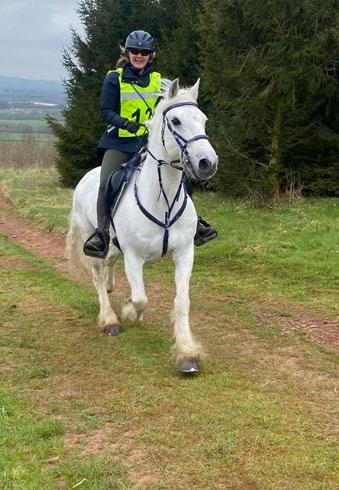

Colour – Black, grey, bay, brown Markings – A star on the forehead and white on or below the hind fetlocks is considered acceptable Action – A smart and true walk, a wellbalanced, ground-covering trot with good knee and hock action Society – The Fell Pony Society was set up in 1922 with a purpose to protect the breed and ‘keep pure the old breed of pony’.
Sarah Norris’s dynamic duo
“I’ve owned two Fell ponies. The first is Southolme Blossom, who introduced me to pure-bred Fell ponies. She was 13.1hh of true grit and determination, coupled with strong opinions. She died in my arms last year aged 27 and has left an aching hole and a huge legacy.
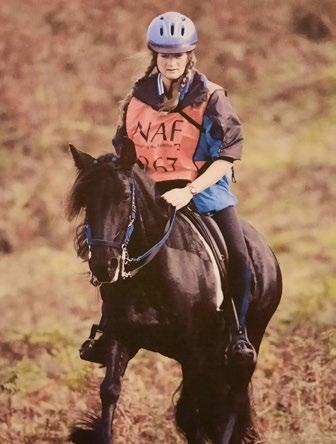
“Known as Little Maddi, she represented Scotland several times and showed her mettle in Scotland, England, Wales and Ireland. She did both the Red Dragon and Golden Horseshoe two-day 160km and completed a tough 120km at over 14kph. Her pinnacle was winning a oneday 160km. Driven by her strong personality and lead mare attitude, and coupled with an exceptionally strong bond with me, we were able to anticipate each other and achieve amazing results.
“My other pony is a gelding called Tynebank Harry (Quarry), who has also completed the Red Dragon and won an FEI 1*. Quarry is also 13.1hh, a grey gelding with a huge personality and an inability to stand still. He loves endurance and loves passing and leaving other horses and he too has represented Scotland. His achievements also include the Red Dragon 160km. He won his first, and so far only, FEI 1*
Did you know?
The late Queen had a passion for Fell ponies and her favourite Fell, who made an appearance at her funeral, was called Emma.
Above: Sarah Norris and Little Maddi
Below: Sarah and Quarry
Did you know?
When railways and canals replaced horses as a form of transport, remote communities continued to use teams of Fell ponies to deliver their supplies and mail.
and also got Best Condition.
“Both ponies have proved that small stature is no hindrance and hairy feet need not be detrimental at high level endurance. Their native balance and shrewd Fell thinking have proved a huge asset, especially on technical mountain courses.”

breed focus
IndiePics
George Michie Sophie Burnett
Sue Parsons riding Midtown Gizmo (black pony) and Nicola riding Murthwaite Blue Peter (grey pony).
Jenny Gilmour and Lownthwaite Vincent
17
World Endurance Championships
Taking a look
behind the scenes
We talk to some of the team behind this year’s World Endurance Championships in Butheeb to find out more about their incredible experiences.

Nicola Thorne and Mousey
“In February I wrote a social media post: ‘When people ask what exactly is the World Endurance Championships? Challenging, inspirational, emotional, a partnership only you and your horse share. One hunded miles – one horse – one day –one goal – one team. Dare to dream.’
“As true now as then. A desert event not suited to Mousey was an extreme challenge. Everything from travel logistics, veterinary paperwork, quarantine, training and getting to the race. To
have the honour to compete at this standard and watch teams of the World’s best endurance horses is inspirational.
“Each competition I aspire to do better and learn new things. I learnt a lot about desert training – the effects of sand and humidity on horses’ skin, on their movement from riding posture to saddle fit, trying to avoid injuries from deep sand. We trained in a group for the first time and adapted our feeding too. It reinforced what a wonderful community endurance is – not just my team and friends, but other riders and crews I’ve met over the years. While we compete against each other, we also provide an abundance of friendship and support. We talk about mental health and sport. There are really special people out there.
“Not finishing of course goes with me to the grave. What did I do wrong? Too slow? Too fast? Too much training? Too unfit? Mousey was simply too hot and metabolically above 64bmp. Presenting moments too late, sound but eliminated metabolic and out of time.
“Mousey tried her absolute heart out, she flew halfway around the world to train and live in a new environment. Race day she was rock solid at the start and held to a steady pace. Her exuberance in vet holds wastes energy as does pulling on course, but this is Mousey. I owe an amazing experience to this incredible horse. Riding in desert sunrises and sunsets is a dream come true. I felt so proud, and the challenge of the next World Championships is still out there.”
reports | endurancegb.co.uk world endurance championships
18
Rebecca Pinder and Oso Irasu
“I grew up in a family who had no knowledge of horses. All they knew was they had a little girl who wouldn’t let her obsession go and with their support, I found myself, for the first time, representing Great Britain in the World Championships. I felt extremely honoured to represent my parents’ birth country and have my numerous relatives who reside there cheering me on.
“The horse I rode was called Oso Irazu. He’s Australian bred but with mostly Crabbet breeding. I found that quite fitting as I was born in Australia, but my family’s background is UK based. We’ve had Irazu on our farm for over three years, training him for an American client, and in this time, we’ve formed a close bond. People were asking me in the lead up to the race how I’d ride him but to be
honest, until the actual day, I didn’t know. I like to wait to judge how they are feeling and how they are travelling before sticking to any pre-set plan. I knew he was arriving in good form so I had an idea he may do a nice race but even he surprised me! He loved the desert and luckily for me he doesn’t need to be in a group to be motivated.
“Irazu loved it all and covered the miles effortlessly. He’s so competitive that even the media vehicles were competition for him. My crew were on form, and we all worked together like a well-oiled machine to present as quickly as we could, do a good vetting and help him rest and replenish in between loops ready for the next one. Unfortunately, due to my own mistake, we didn’t get the finish we’d have liked and that Irazu deserved but I’ve always said this sport is about the journey and not about the position. I’ve had the
most incredible journey so far with Irazu and he gave me the race of my life that day. I feel blessed to train and race such a talented horse and have an incredible team of people to help us arrive at this level. Our race position wasn’t the ‘end result’. The end result was about our incredible team, horse, relationships and riding, and an important lesson learnt.”
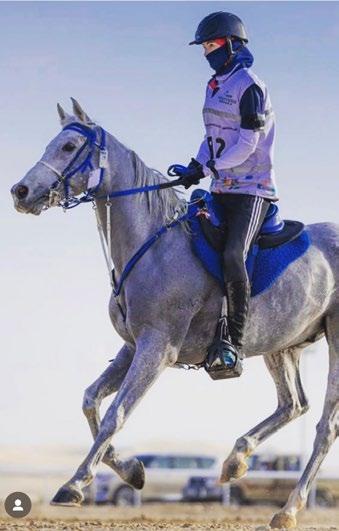
Carmine Villani and Bayla d’Alluech
“The race was tough for the horses. The lastminute change of venue to Butheeb meant three difficulties all combined – lots of deep sand, the heat and lack of water. Then you have the horses who are used to the heat and the sand. Clearly the horses from Europe didn’t have that advantage and had to be managed conservatively.


world endurance championships
19
“Irazu loved it all and covered the miles effortlessly. He’s so competitive that even the media vehicles were competition for him.”
Rebecca Pinder and Oso Irasu
Nicola Thorne and Mousey
Carmine Villani and Bayla d’Alluech
“Unfortunately, on the penultimate loop, the last 5km had very deep sand in places, so either you had to walk or take a risk. Even though my horse always recovered within a couple of minutes at the vet gates – she has an amazing heart – at that point we were going for a top 20 so I kept up with cantering. I think that was it really, probably combined with some tiredness, meant her gait wasn’t 100% and we were vetted out at the penultimate vet gate.

“There were a lot of eliminations as expected. I started very conservatively as I expected them, but it was a great experience for us and the crews. Team GB were very unfortunate because nearly all the way to the final loop we had five horses in the game so almost to 100km we had a good shot for a medal.”
Dr Sarah Coombs BSc.BVetMed. MRCVS
Sarah Coombs is an equine vet in private practice and since 1995 has been an FEI endurance and eventing vet.
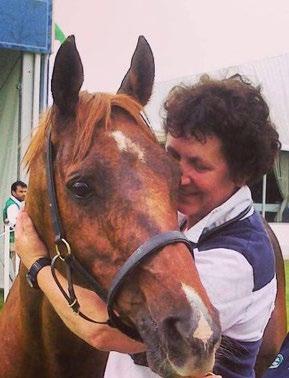
“My role at the championships was as part of the HSC team. We had two teams working from the first inspection and on ride day carrying out 124 tests, including some at the finish.
“In general, the competition was well managed, not least by our own Jo Woodman acting as FVD, and horses were in good condition and taken out of the competition by the vets before being seriously compromised. There were no seriously ill horses in treatment during the day but very regrettably two horses that passed the
final inspection died subsequently. As always, when there are equine fatalities at a competition, those horses received a full post-mortem and investigations into the circumstances around their deaths is ongoing.
“As Deputy Chair of the FEI Endurance Committee, I can say first hand that we’ve had an extensive debrief around the deaths of these horses and all aspects of the Championships. We are looking very carefully to see if lessons can be learned, particularly in the light of the rule revision for Endurance for 2024, and we are reviewing vet inspection procedures.”
James Dickinson and Magdy
“Looking back at the World Championships, the whole experience seems surreal. Katie and I had many discussions on the run up to the trip and both agreed we had no pressure or expectations. It was a once in a lifetime opportunity and we were just going to enjoy every moment. When we left, we knew we’d done everything we could to make sure Magdy was as prepared as he could be –no easy task in a British winter! But we were quite aware of the challenges that lay ahead, not only the 160km of deep sand track, but also the difficulty of taking a horse from the UK to the UAE!
“When we arrived in Butheeb we were amazed by the facilities and attention to detail. We spent the days on the run up to the competition making sure Magdy was in the best form and were lucky to have the management team on hand to ensure we were fully prepared. We were able to drive and ride some of the track and gain tips from local riders, which proved useful for competition day. We also enjoyed some downtime exploring the area and sunbathing by the pool!
“Ride day came around quickly, but we were pleased with how Magdy had recovered from the journey, and he seemed to be enjoying the experience. My plan was to do the first loop at no more than 15kph and to average around 14kph over the 160km. I was conscious this would be a lot slower than most of the nations and didn’t want to be ‘carried’ along faster, especially on the early loops. We were pleased that the organising committee and veterinary panel agreed to lower the minimum speed to 13kph, in light of the challenging terrain and heat.
“Race day was the hottest day of the trip at 36 degrees – 30 degrees hotter than the UK! I was fortunate to have a very experienced crew team of Katie, Alice Ingram, Paula Lynam, Alex Bedwin and Nikki Brown, and they were a huge part of the success. Managing Magdy and myself was not easy in the conditions and the further we got, the more
“Ride day came around quickly, but we were pleased with how Magdy had recovered from the journey, and he seemed to be enjoying the experience. My plan was to do the first loop at no more than 15kph and to average around 14kph over the 160km”
James Dickinson and Magdy
reports | endurancegb.co.uk world endurance championships 20
Dr Sarah Coombs
I wanted it, despite feeling unwell from heat stroke!
“We were lucky to have the company of Cheryl Van Deusen and Robert Gielen for most of the last three loops, which helped reduce the psychological effects of the competition. We finished at 21.30, at a speed of 13.6kph in 42nd place. I could not be more grateful for the opportunity and to everyone who has helped us along the way. My biggest gratitude of course goes to Magdy, who is the most incredible horse, and we are so proud of how he dealt with the competition.”
Linda Cowperthwaite and Kracker
“I’ve never focused so hard in my life but had total belief we could achieve our goal as part of team GBR. This belief comes from our trusting relationship with Kracker, the total dedication in our preparation and a fantastic, experienced back-up crew. People asked me if riding in the desert was boring, well, I have never studied sand so intently in order to pick the better going while also being aware of what’s going on around me. So much was unknown on the first loop – coping in a big field, the going and the vet gate, which was my biggest worry.
“Kracker was chilled, and my crew and I worked almost in silence, only to call out his heart rate. Quickly through vetting and to the crew area, attending to Kracker’s every need. Team vet Georgina checked Kracker over with a quick debrief. Glyn was super-efficient and had checked shoes before I had time to ask. Before long we were tacked up and ready for the next loop. Kracker was loving it and pulling to get back out on course, which is an amazing feeling. The whole day was so intense that it passed in a blink of an eye!
Sarah Light, Linda’s crew and physio
“What an honour and privilege it was to go to the World Championships. Everything from the truly spectacular opening ceremony to watching the sun rise and set in the desert and seeing Kracker and Linda in action was unforgettable. As with any experience it’s what we learn and take away that helps us grow.
“As a physiotherapist it’s part of our practice to reflect on what went well, what didn’t go as well and most importantly to learn and do better. I discovered I wasn’t fit enough as crewing in the desert was tough. The heat and terrain are very different to what we’re used to in the UK and a few more sessions running on the beach at home wouldn’t have gone amiss. Despite these challenges, we pulled together keeping spirits high and enjoying the scenery in a way I’ve only ever previously dreamt of.
“Our aim was Kracker’s welfare, crucially providing as much water at each crew point to keep him cool and hydrated. Once back at the venue, cooling was again essential for him. We monitored his core temperature with a thermometer for his well-being and recovery at each stage.
Evelyn Helme, Kracker’s owner, adds: “Everyone plays their part; the aim is to do your best to the end and whatever the result you know you’ve done the best for the team.
“The days before the ride we all discussed what was needed to achieve our aim of successfully completing the World Championships. There’s so much to bring together including ride tactics, layout of crew area and speed of presentation.
“With so many horses involved in the ride it was hard to spot your horse and sloshing was no easy task either. All fears that Kracker wouldn’t cope in the alien environment soon vanished, he seemed to relish the heat and sand (why had we worried?).
“At vet gates we used just enough water to cool him, as water can push his heart rate back up, we gambled and presented earlier than we normally would and with great relief it worked (these were heart stopping moments when I said present at 64 +).
“He loved his stops at the vet gates as he could eat what he wanted and even managed to steal other team horses’ feed (self-preservation matters to Kracker, so much so he even took over another horse’s fan to cool himself).
“As the day progressed, we couldn’t fault him so it came as a shock for him to be eliminated at 120km, we’d even started to believe he could have made it to the end. I think we all worked together although the result wasn’t what we hoped for. We brought a fit horse back to the UK and after his rest he’s now come back into low impact work. Linda took him to a pole clinic and, for the first time in a few years, I rode him on the beach. We look forward to his next adventures.”
“My role as a physio was treating both humans and Kracker, ensuring optimum movement. I set up a pop-up clinic in Kracker’s stable one morning utilising my bag of go-to equipment and a repurposed bale of shavings as a treatment couch.
“I’m back home now, working on my fitness but fondly retaining my final memory of Kracker in Dubai – a happy horse rolling carefree in the sand.”
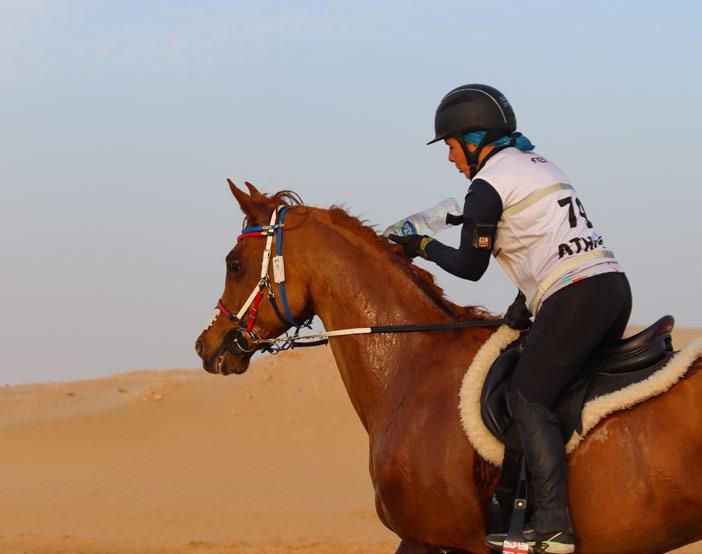
Susy Rossi, crew/on-site groom
“Being part of team H is always a privilege, but this was something else! The build-up to the race from Kracker arriving in the desert after that epic journey was like no prep I’ve experienced before. We were non-stop for the full week up to the race day making sure Kracker was adjusting well, resting and recovering and ready to face 160km in the desert heat and sand dunes.
“Watching them canter through the sand dunes and tracks on the harrowing loop three in 37-degree heat will be a memory that will stay with me forever. Linda and Kracker looked to be thoroughly enjoying themselves, and we were really feeling the heat, so I can’t imagine how hot they were. We focused on keeping both of them hydrated and as cool as possible out on course and keeping Kracker as cool and calm as possible in the vet gate and vetting. Once back in the vet hold, getting Kracker to eat is never an issue but we really had to work on keeping him cool. The day went so fast, and it was disappointing not to see him complete that last 40km when he looked so very good out on course, but I’ll forever be thankful to team H for giving me this amazing experience.”
A truly incredible experience that will live with me forever.”
world endurance championships 21
Linda and Kracker with slosh
The Druimghigha Stud
Marthe Kiley-Worthington from Druimghigha Stud, Brendon, Somerset, tells us more about the history behind her enterprise.
The Druimghigha Stud was established in 1959 with the purchase of a Thoroughbred mare called Stirrup Cup, who was registered with Wetherbys. In 2023, the stud has entered its seventh generation of Arab and part-bred horses.
Stirrup Cup/Kathiawar was a 16.2hh bay Thoroughbred mare who I purchased with my post office savings of £40. It turned out she was renowned for rearing over backwards with jockeys and had been sold on from racing stables as a major problem. She never reared with me, but she had a well-established stereotypie of crib biting. It was this that awoke my interest and subsequent career as the first equine behaviour and welfare scientific consultant.
Stirrup Cup became a great companion and friend who taught me and kept me focused on horses’ minds long before it was a subject of study. In the 1970s, the longest running behavioural study (four books written for horse owners and 100 scientific papers) began on the Druimghigha horses.
While I was studying in Scotland, Stirrup Cup visited Nimran, a pure-bred Arab, and produced Syringa (Anglo Arab). She eventually visited Harwood Asif and produced Baksheesh (3/4 Arab/1/4 Thoroughbred). In the 1970s Baksheesh and I took part in the first Arab
races (placed third twice), one of the first 160k rides on the South Downs, and he won several of the first Endurance Horse & Pony Society 80km race rides and twice won the AHS Marathon.
Baksheesh covered a Welsh Mountain pony and produced 13.2hh Aisha Evans who was Scottish Endurance Champion in 1987. She also won best condition at the Summer Solstice in the late '80s. In addition, Baksheesh fathered a number of well-known names in endurance on an Irish draft mare - Druimghigha Shiraz and Druimghigha Shereen (runner-up Scottish Champion in 1987, winner of AHS marathon).
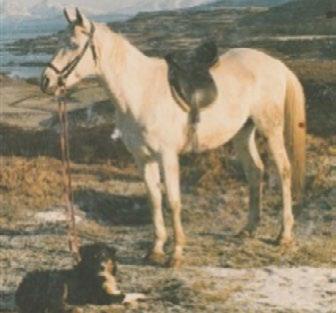
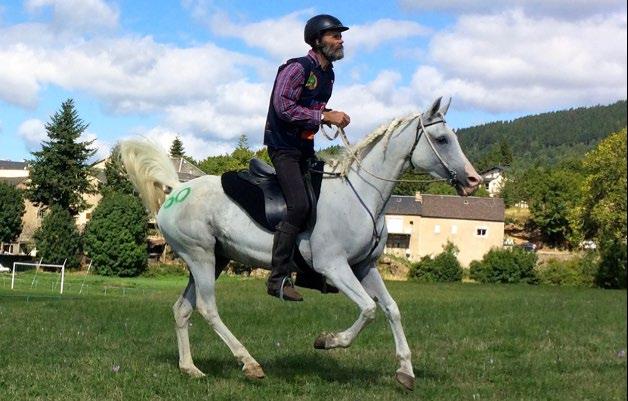
Our aim
Right from the beginning, the central idea of the Druimghigha Stud has been to give every individual a life of quality which meant questioning much conventional horse management and training.
We aim to develop real cooperative relationships between ourselves and our horses, so they are employees or family members, not slaves, and to test how to do this we asked "can beautiful, versatile Arab and part-bred Arabs have a life of quality (which can be measured by the freedoms they have) and compete at international level?"
We live together, and both we and our horses must help generally with the farm by harrowing, working the garden, collecting and moving the stock and carrying us about, as well as competing and teaching others.
The stud is best known for endurance, but we have bred, taught, competed and often won in flat races, jumping (two grade A horses), dressage (to Intermédiare, one level before Grand Prix, as well as training six horses to Prix St George), won the marathon four times and placed five times in the first four. We have done many endurance graded and race rides in UK
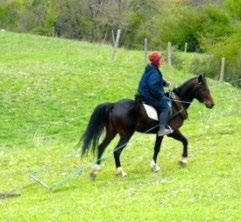
Interview
Lilka at Florac 160km in a day
Baksheesh on the Isle of Mull with Rhum in the background
22 interview features | endurancegb.co.uk
Druimghigha Shatish harrowing a field in France
and France up to 160km…
• Omeya (sixth 160km, placed also in 60,80,90,120km races, and second and third Marathon)
• Oberlix (Aboud x Omeya, sixth 160km and second and third Marathon, won several 80km and 120km races)
• Druimghigha Shiraz, Druimghigha Shereen (winner of Marathon on Exmoor and 80km races)
• Druimghigha Shemal (Oberlix x Shiraz, won Marathon in 2000 and raced and won 60/80km in France)
• Druimghigha Shindi (Oberlix x Shereen, won several 90km races in France)
• Lilka (bought from Holmes Farm Stud when six months old and won Florac in France 160km at 17.3kph, heart rate 54.
• Druimghigha Shiera, Druimghigha Luxor, Druimghigha Lantana were sold and all became members of the British team
• Druimghigha Shatish (Oryx x Shemal, won several 90km races in France and second Red Dragon).
Look out this year for Druimghigha Larikn, Lilka’s grandson (at five, the South West Novice Endurance Championship 2022), competing at Open Endurance level and Medium level in dressage, who is accepting visiting mares.
Natural thinking
There are 15 major differences in how we keep and teach our youngsters (see ecofarmandstud. co.uk) but the most important are that they can make choices every day of their lives, whether they are out or in, and who they are with and have more freedoms than many wild equines. The wild is by no means the most free place to be. The stallion only covers the mares when they are free running in a field, and foals are not weaned.
Cooperation between horse and rider is demonstrated because we have never (60 horses bred and taught to date) used any equipment but a bitless bridle or simple snaffle, saddle, breastplate and numnah. They may be
shod in front (when doing 40km or more) and we do use pads under natural balance shoes if they are doing more than 60km rides and at risk. They are never fed more than 2kg of grain food and never any composite foods.
We probably have less than the usual share of lameness and sickness, since the average length of life of our horses, including foal deaths or miscarriages (rare), is over 24 years. Druimghigha Shemal (winner of the marathon in 2000) is 30, Lilka 23 (winner of Florac 160km 2016), Druimghigha Shindi 22, (winner of four 90km race rides in France and Prix St George dressage) all still strong, working, teaching and competing.

But it’s not all roses and life can be tough for us and our horses. We must take the rough with the smooth and take solace from each other in the enjoyment of each other’s company. The adage is: ‘You can take a Druimghigha horse anywhere and do anything with him/her, including winning competitions, but both your horse and you must enjoy it’.
Happy horses
We don’t do more than one 160km one day ride per horse per year, and usually only two or three shorter ones with that horse. We’re
now more interested in multi-day rides as it’s becoming clear that although the horses may be fit enough both physiologically and mechanically, they can easily become bored particularly in the training for very long rides. As a result, we have many strategies and they do many different things to keep their motivation going.
Also, we rarely have a crew except in very long rides or races because we don’t believe it makes sense on the carbon footprint to take two vehicles to ride only 80km. I would like to see crewing with extra cars blocking up the roads banned. It could be done and is being done in some countries.
What we like most is long excursions with our horses where we are mutually dependent without any back-up vehicle. In 1999 we rode around France on Druimghigha Shemal (mare) and her stallion father Oberlix, conducting workshops and camping together, and we covered over 2000kms with no vehicle.
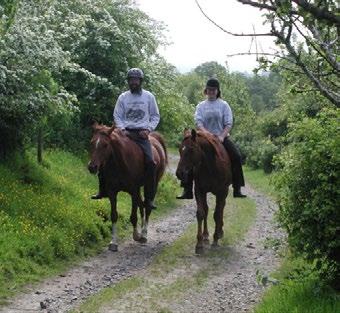
We also do multi-species ballets where the animals are the actors and the humans the extras - Sleeping Beauty was televised and shown three or four times - and we do displays at local events and workshops, even at the Cadre Noir in Saumur. These performances are to entertain and educate horses and people, showing that beautiful Arabs can do anything and go anywhere if they have a life of quality and are taught cooperatively.
Only one or two of our three or four mares breed each year but, over the years we have bred and taught some 60 or so youngsters. Every mare takes part in other work before they breed and some prefer being ‘professional mares’, finding having foals and motherhood a bit of a bore, while others want to be maternal, but like many modern women, they do both.
We sell fillies and colts when they are 3-5 years old. By this age, they have completed their ‘primary schooling’ (work on the ground) and ‘secondary schooling’ (backed and ridden on quietly to novice/elementary dressage standard and 40k rides) and are ready to go on to ‘university’ with discerning people who appreciate them and where they will have enjoyable lives in any discipline.
What’s next?
This year Druimghigha Shebang (15hh bay partbred Arab gelding Larykn x Druimghigha Shindi 2020) is for sale, and Druimghigha Larikn, pure Arab grey stallion, 15hh, 2017, SW Novice Endurance Champion 2022) is at stud on Exmoor.
We would like to retire now and are looking for someone mainly interested in dressage, endurance, behaviour and welfare to train and then take over the stud and earn his/her living from it. Email marthekileyworthington@gmail. com to find out more.
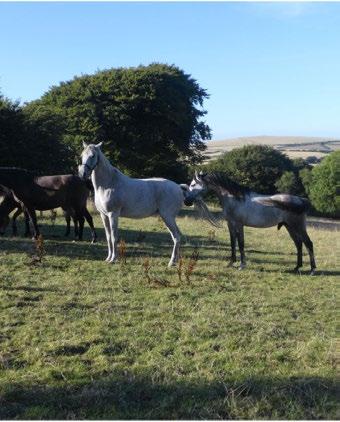 Druimghigha Shemal
Druimghigha Shemal
23 interview
Riding safely through the lanes on Dartmoor with no tack
And they’re off!... RoR news
Anna Collins talks to owners of ex-racehorses to find out more about their endurance journeys and why RoRs appear to take to the sport willingly.
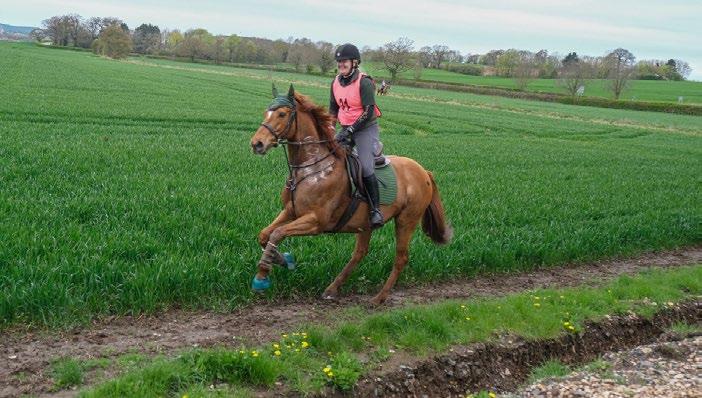
With the jump racing season over and the flat season underway, there will be a new crop of racehorses needing a second career. Some will go on to another discipline such as showing, jumping, dressage, polo or horseball, or live quietly as a riding or companion horse. I was lucky enough to work at Aintree this year on Ladies Day and Randox Grand National Day. Just like when I work at Bangor and Chester, I’m not just looking to pick race winners, I am fantasising about who would make a good endurance horse and I fall in love with far too many at every race!
So, I am proud that this year, The Sir Peter O’Sullevan Trust has sponsored the RoR Endurance Series to recognise EGB members who get started in endurance and it has got
underway at quite a pace. Some of the riders and horses explain why they chose to ride an RoR in endurance. RoR has almost become another breed – a Thoroughbred who enjoys life after racing!

Rebekah Radford and Rupert Boy
“Rupert ran 25 times over three seasons with one win and winnings of over £2.5k,” says Rebekah. “He’s a quirky boy but an absolute
retraining of racehorses features | endurancegb.co.uk RoR
Dan Abraham
Olivia Wild and Maximiser
Marimages
24
Rebekah Radford and Rupert Boy (IRE) on his first Endurance ride - 20km at Haywood Oaks
pleasure to own, and every year we have an aim – last year it was to get to Aintree and STARS and this year our aim has been to get out and about as much as possible to different places, without him thinking he’s going for a race and to have some more fun. Usually at weekends you will find us either showing, hacking or doing clinics, so when I saw this endurance ride advertised locally I thought we should give it a go. A lovely lady on my yard goes to them regularly and reassured us we would be looked after and have a great time.
“The ride was excellently run and signposted (only had to get the map out once!).
"Rupert really enjoyed the leg stretches up the good going paths and was truly in his element. Although he used to race as a sprinter, he’s taken to doing much longer rides with ease and was only starting to get tired towards the very end. I can’t wait to do more and start building the miles up for the RoR Endurance Seven Challenge. We have since entered two more!"
We also have the added incentive that RoR are doing a series in which we collect miles and get rewards, so for anyone wondering if they should give it a go, I can reassure them that it’s a great idea.”
Gabrielle Smales and Alys Rock
Gabrielle has owned 15-year-old Alys Rock, aka Heidi, (IRE) for three years. “I’d owned an RoR before so I had an inkling what she would be like,” says Gabrielle. “I bought her direct from her trainer and luckily for me, as part of her training, she’d done flatwork and been hacked out, and the trainer made sure we were totally suited to one another. A former hurdler, chaser and national hunt horse, Heidi had three wins from 30 races and won over £10,000.
“Heidi loves hacking which is why I have entered her for endurance rides. We have done pleasure rides and trail hunted. It’s fantastic to get off the roads and go across land that’s usually off limits to us. Heidi is very well behaved around groups of horses, she has a lovely soft mouth and canters off the bridle

now. I’m 58 and did wonder if I might be too old for a Thoroughbred. We have had an odd moment if she sees a clump of bluebells that have appeared overnight, but we’ve got used to each other and have a strong bond. Like most RoRs, she has perfect stable manners, loads and travels perfectly. I love her to bits and wouldn't hesitate at getting another RoR.
Sam Bowkett and Pageant Master
Sam Bowkett is a seasoned RoR rider in endurance and has just teamed up with Pageant Master (IRE) 2016. Eddie (as he’s known at home), belongs to Kerry Jager and won over £3000 under race rules from 16 runs on the flat. Sam was kindly offered the ride this year, after losing her Arab during Covid. She now has a very young RoR who is turned away to grow and next year he will learn the ropes (probably from Eddie), about being an endurance horse.
Sam says, “Eddie has been retrained by Kerry and is an absolute gem. Having turned his hoof to eventing and show jumping, he’s now also an endurance horse! RoRs are fabulous at endurance as they are already conditioned to
being ridden in groups, travelling, being washed off and clipped, for example. We have quite a few RoRs on the yard, they are just so versatile and can have a fabulous career after racing in all disciplines, but they do seem to love endurance. Nothing beats being out in the countryside cantering along with friends old and new.”
Olivia Wild and Maximiser
Olivia says, “This is my third season as a member of Endurance GB riding my 15-year-old former racehorse Maximiser (IRE) who ran nine times over jumps and also won a point to point. He retired from racing in 2017. So far we’ve completed 10 pleasure rides ranging from 21km to 32km and our first ride of the season was Tanfield 24km pleasure ride near Gateshead.
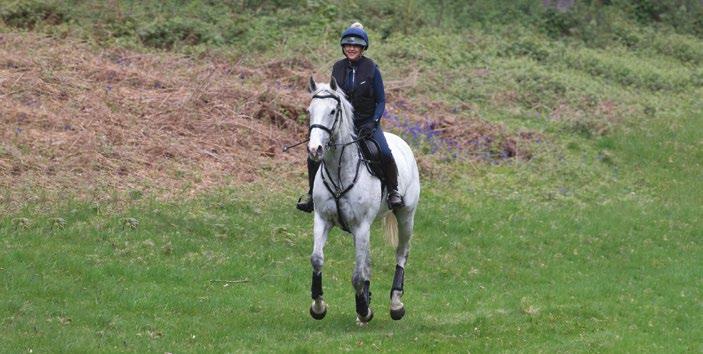
“We were introduced to endurance riding by three friends in my local area who are all experienced competitors and long-term Endurance GB supporters. They showed me a much wider range of hacking routes in our local Yorkshire Dales area and guided me through the procedures and protocols when competing in an event. Their help has been invaluable in our endurance journey, and I have learnt so much already!
“Max loves getting out and about discovering new environments and the challenges of crossing a variety of terrains and encountering a diverse range of obstacles. Every ride is a learning curve for both of us. Tanfield provided some interesting shaped cycle barriers to negotiate!
“For me it’s a privilege to be able to ride through stunning countryside with like-minded friends and to continue to build a strong and trusting relationship with Max. We have enjoyed completing pleasure rides so much that this season it’s my ambition to upgrade to novice foundation level and work on improving both of our fitness levels with the aim of increasing ride distance.
Looking for your next partner?
The range of horses here clearly shows that you can enjoy endurance on an RoR which has jumped, raced on the flat, retrained by a trainer or been brought on with experienced hands. Given the exorbitant price of equines these days, an RoR can often be picked up at a very reasonable cost.
If you are thinking about retraining a former racehorse for endurance, check out Source a Horse which is RoR’s dedicated website for buying or loaning former racehorses at www. sourceahorse.ror.org.uk
Don’t forget to register your RoR with EGB on Clubhouse which you can do by contacting clubhouse@endurancegb.co.uk
If you have any questions or want to claim an Endurance 7 Series Reward contact Anna Collins at endurance@ror.org.uk
retraining of racehorses
Gabrielle Smales and Alys Rock
David Saunders
25
Sam Bowkett and Pageant Master at Haywood Oaks – the horse's first ride
integrated awareness Understanding
Learn to use wider awareness to understand and train your horse more effectively, says Jenny Lee MMCP
In her book ‘The Human Herdawakening our natural leadership’, Beth Anstandig introduces the Four Channels of Integrated Awareness model which provides an interesting lens through which to view the relationship between endurance horse and rider. The Four Channels of Integrated Awareness are:
1. What is happening with me?
2. What is happening with my horse?
3. What is happening between us?
4. What is happening around us?
In the last issue (pages 20-22) we considered Channel 1 and in the second part of this series we’ll now consider Channels 2-4. In her book Beth explains how cultivating our awareness capacity and noticing the finer details helps us to see the bigger picture so we can have better self-leadership and provide an enhanced feeling of security for our horses.
Channel 2 – What is happening with my horse?
This section will focus on factors that can cause challenges to our horses and their ability to perform, namely fear and anxiety, confusion and lack of understanding, and pain and discomfort.
A good starting point to having an empathetic view of equine stress is to understand the horse’s nervous system. The latest research
modelling from Sarah Schlote identifies the sympathetic nervous system (SNS) as the accelerator and the parasympathetic nervous system (PNS) as the brake pedal. The PNS is split into the dorsal vagal complex (DVC) responsible for rest, digest and healing but also freeze/shut down and the ventral vagal complex (VVC) is responsible for social engagement. It’s believed that these systems function like three dials. While the SNS is involved in survival activation, it’s also responsible for other mobilisation such as play or reproduction that are not negative experiences. The SNS dial can be high or low tone but is also moderated by both branches of the PNS acting as a braking system. For example, if two horses are playing then the VVC will mitigate the SNS going too high and tipping into fight. In a situation where
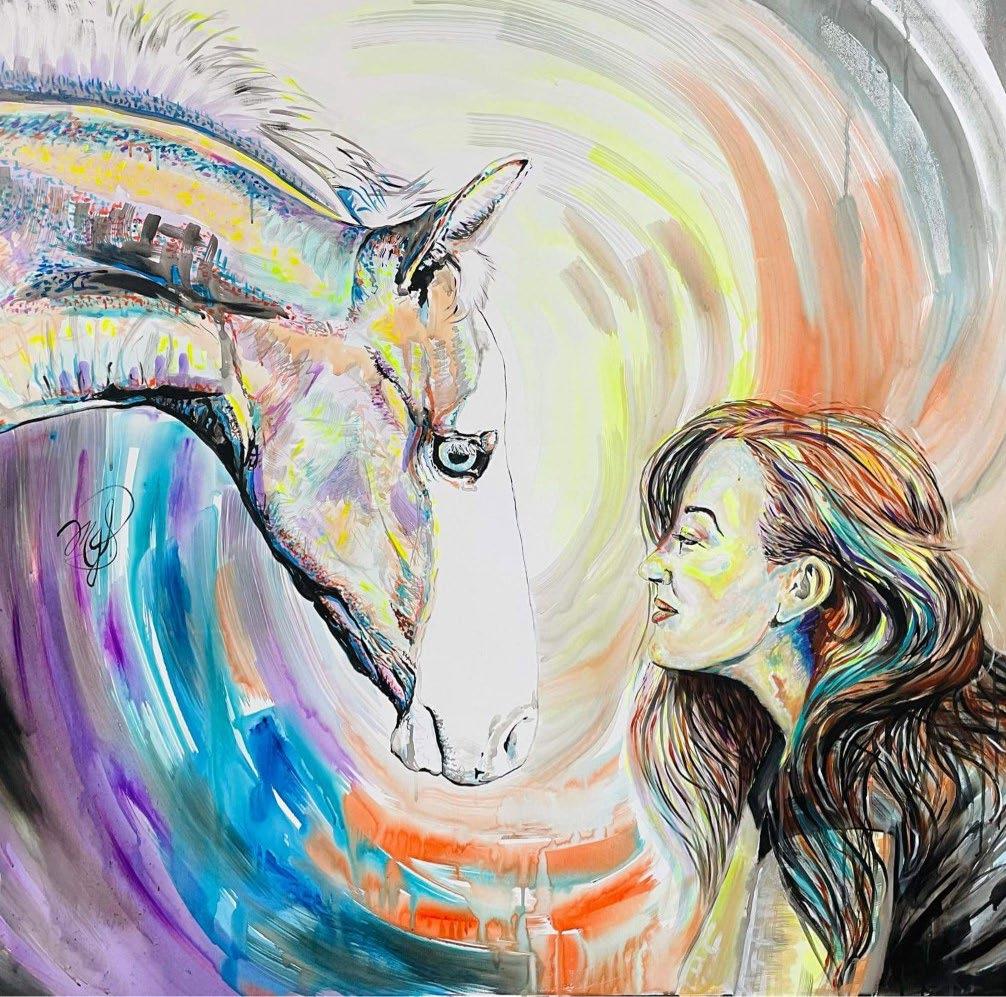
psychology features | endurancegb.co.uk Psychology
Part Two
www.mjsequineartstudios.com ). 26
Maggie Justice Leverett (
fight and flight are not an option, a horse may resort to high tone DVC and shut down.
Consider a horse taught through learned helplessness and force to lie down on command. In this example of immobility with fear, both the dials for SNS and DVC will be high and VVC will be low.
This latest research has numerous implications for how we train our horses. Not all stress or SNS responses are bad or inherently overwhelming to the horse. Horse training techniques should look to increase the reasonable window of tolerance in which the horse can cope with stress without being overwhelmed and sent into hyperarousal of the nervous system. Training approaches that are based on mutual trust, patience and close observation of the horse’s responses will help a horse build their resilience and increase their ability to cope with life stresses.
Stress tolerance training
Wayne Bushnell (www. waynebushnellhorsemanship.com) is a natural horsemanship trainer who teaches his clients to put relationship before horsemanship. Wayne understands the importance of trust and connection with horses and his approach is built around clear boundaries and communication and setting the horse up for success. The questions asked of the horse are ‘yes’ questions, meaning it’s well within the horse’s capability to give the right response and be praised accordingly. This approach helps the horse build confidence in himself and in the trainer and keeps the horse motivated to ‘look for the right answer’.
A key element of this process is allowing the horse time to process what’s being asked and to be rewarded with time to relax and settle on finding the answer. Giving the horse patience and time also prevents trigger stacking where each stimulus builds upon the last without being processed, until the last seemingly innocuous stimulus sends the horse over threshold. Keeping the horse in this balanced state of low tone sympathetic and mid tone parasympathetic is the optimum state for learning and retention. The more forceful traditional approaches of horse training and ‘breaking’ tend to involve ‘flooding’ of the horse’s nervous system leading him to shut down into learned helplessness. As part of building a relationship with the horse, that provides them with a sense of comfort and safety, Wayne also establishes himself in a leadership role. This role is founded with clear and focused intention and defined boundaries. As covered in Channel 1 it’s vitally important for the trainer to engage with the horse with emotional stability and curiosity and not be triggered into fear or anger by a horse that’s struggling and expresses his concerns. By staying present and closely observing
subtle signs of unease in the horse, Wayne can react accordingly and in a timely manner. This responsiveness communicates to the horse that Wayne is paying attention and helps them feel attuned, i.e. seen, heard and felt, which goes a long way in keeping the PNS dialled up and the SNS kept below threshold.
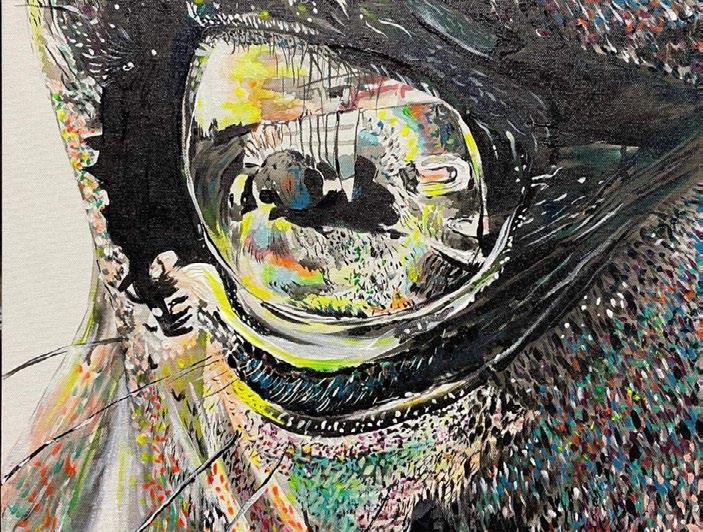
Having established connection Wayne will then start gently asking for movement using his intention and body language. The exercises used are not simply about ‘moving feet to establish leadership’ but are targeted to help the horse focus in on his trainer and soften through his body, releasing tension. Most horses will overbend in the neck and underflex in the shoulder, withers and back and Wayne encourages stability in the neck while asking for bend in the rest of the body. This softness ripples through the body to the hind end releasing tension in the ribs and allowing deeper breathing which aids further relaxation. Poll release or head down is another exercise that engenders a feeling of relaxion and stops the horse blocking through his shoulder when moving forward. As the horse grows in confidence, Wayne will increase the level of challenge with more complex movement patterns and the use of obstacles. This serves to extend the ‘window of stress tolerance’ and encourage the horse to enhance his body straightness and suppleness.
Another key component in training a horse is the clarity and timing of aids. A horse that cannot understand what’s being asked can either end up over threshold in the SNS with fight or flight or the DVC may also dial up leading to shut down. It’s our job to communicate to the horse in a way that he can understand.
Physical pain and discomfort
Most horses with significant and long-term behavioural problems, or those displaying multiple alleged bad behaviours, are suffering from pain. The primary issues that should be eliminated include saddle fit, bridle and bitting issues, rider balance, access to forage, contact with other horses and turnout availability. A maintenance programme of bodywork is also important to prevent tension and compensatory patterns altering gait and causing discomfort. Good farriery and dentistry are also both essential for the welfare of the horse. While hoof care is a lot easier to observe than dentistry, it’s still important to understand what the dentist is doing to your horse’s teeth. It’s essential your dentist gives the back molars the same care as the front and focusses on managing the angles of the teeth to optimise movement of the jaw. Your horse should also be able to open his mouth comfortably with a soft Temporomandibular joint (TMJ).
Unfortunately, some horses will show ongoing mild or sporadic movement issues, and a detailed lameness assessment with a suitably experienced lameness specialist can save time, effort and money in the long run. It pays to understand what a completely sound horse looks and feels like and to familiarise yourself with pain indicators showing gait abnormality.
Sue Dyson, former President of the British Equine Veterinary Association, has carried out several studies on lameness and poor performance in the ridden horse (www.equitopiacenter.com; www.24horsebehaviours.org). The results of her studies of ‘declared sound’ sports horses in active work makes grim reading with the psychology
). 27
Maggie Justice Leverett ( www.mjsequineartstudios.com
percentages of horses with overt lameness or pain-related gait abnormalities ranging from 47% to 65%. Sue’s research has shone a light on the gap in knowledge of vets, riders and trainers around pain recognition and the identification of low-grade lameness. As a result of this, Sue has developed a Ridden Horse Ethogram that identifies 24 pain-related horse behaviours, the majority of which are at least 10 times more likely to be seen in lame horses versus non-lame horses. Generally speaking, the observation of eight or more of the 24 behaviours is likely to reflect the presence of musculoskeletal pain even if overt lameness is not observed.
Interestingly, a separate study concluded that a high level of adrenaline and the release of endorphins may overcome musculoskeletal pain. This factor can cause huge frustration for the owner who has identified that the horse ‘is not quite right’ but then sees the horse gliding through a lameness assessment at the veterinary hospital high on adrenaline. If at all possible, lameness assessments, and indeed pre purchase examinations, should be carried out in a familiar and low arousal environment.
Clearly there are numerous conditions that can cause pain and discomfort and impact your horse’s ability to perform. Some conditions can be managed with a lowered expectation of performance, longer warm-ups, medication and condition specific care management. The important message is to closely observe your horse and have a good understanding of what is normal and healthy so that any changes can be identified.
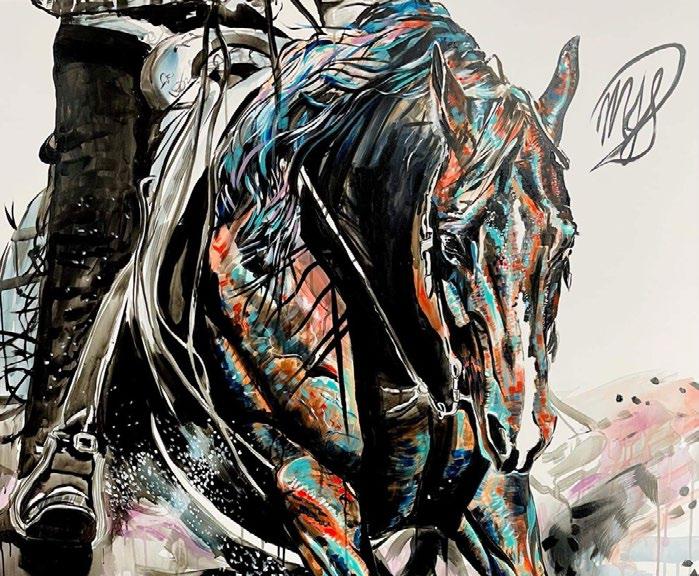
Channel 3 – What is happening between us?
Humans can be the biggest source of stress for a horse, with many horses not feeling entirely comfortable around us. A horse being led into the yard will often demonstrate separation anxiety and have a strong desire to return to his field mates. Horses get a sense of safety in a herd as they are protected by group awareness. This awareness is a shared resource allowing the herd to stay safe and conserve energy. While the horse that is ‘on shift’ is in high arousal, the remaining horses can relax into a calm alert state. In order to provide that security to your horse you need to demonstrate to him that you are fully present and aware. Some trainers use the imagery of a bubble to explain the formation of the partnership. However, the person needs to have the ability to be present, connected and self-aware and to focus on the horse in any given moment. An anxious and reactive human with a scattered, busy mind will struggle to entice a horse into their ‘bubble’ in the same way that we would not want to jump into that person’s car for a relaxing drive.
Channel 4 – What’s happening around us?
Of the four Channels of Awareness this is one that we tend to be well tuned into. We notice the flapping crisp packet in the hedge, the oncoming tractor and the excited rider cantering past our horse on a ride. With an experienced horse it may just take a subtle sign of reassurance from the rider, such as a withers scratch, before mentally and physically moving forward with the ride. However, an inexperienced or more sensitive horse may require a higher level of commitment to get the focus back to the rider.
Bella Fricker (www.bellafricker.co.uk) is training her young horse Spice to ‘widen his window of tolerance’ but on his second endurance ride the environment brought some challenges that pushed Spice over threshold. Bella made the decision to dismount and used long and deep breaths to bring herself into a calm state. Bella used her voice, her body language and her breathwork to create a safe ‘bubble’ for herself and Spice. They worked through some groundwork exercises which helped Spice return his focus to himself and Bella and to flex his body, release tension and take deeper breaths. Bella remounted once Spice was settled and they finished the ride. Their third ride was a few weeks later and reflected the increase in Spice’s confidence from having processed his previous ride experiences. On any ride there will be factors that we can’t
control but there is plenty that can be managed and trained for such as gates, water crossings, traffic, fitness and mental resilience, in addition to having the right kit for the conditions and researching the route.
Conclusion
Beth’s awareness model allows us to step back and see the full picture. We can scope out what’s happening in the here and now and experience it from all angles. The overview allows us to see how all the parts of our current experience are interacting and fitting together. The Four Channels give you a more objective view away from ego centric thinking and allows you to live more intentionally and in full awareness. What more could your horse ask than that?
Thanks go to
Our wonderful contributors: Jenny Lee (MMCP Masterson Method Equine Bodywork), Wayne Bushnell (www. waynebushnellhorsemanship.com), Bella Fricker (www.bellafricker. co.uk) and Maggie Justice Leverett (www.mjsequineartstudios. com). A free illustrated Field Guide to the Ridden Horse Pain Ethogram (RHpE) can be downloaded at www.24horsebehaviours.org
psychology features | endurancegb.co.uk
Original artwork created by Maggie Justice Leverett (www.mjsequineartstudios.com).
28
Maggie Justice Leverett ( www.mjsequineartstudios.com ).
We are now well into the season, and I have been busy processing your ride results as they come into the office, delivering equipment across various rides, dealing with enquiries and starting to think ahead to the AGM and Gala Dinner, there is always lots to be keeping me busy in the office!
Don’t forget, now when you require a new Mastercard, whether it is your new yellow one to follow on from your green one, or your yellow one is nearly full, you no longer need to send it to us. Just head to the shop and select member services and EGB Continuation Mastercard and we will get it sent out to you as soon as we get it. You only need to pay £1 for this to cover postage.
Thinking about upgrading you or your horse? You can either do it at a ride by asking the technical steward, or via the shop. Once you have requested
your upgrade, you will receive a certificate that is posted out to you, or if your horse upgrades, they receive a certificate and a medal. We also upload your certificates to your profiles on the website, so if you ever need to reprint it, you can do this at home.
We are reintroducing some medals and keepsakes for our members, including first CER and first 120 in a day. You will be able to request these through the EGB shop, an they will be posted out to you. You can again find these in the shop and they will be available from June.
Speaking of the Endurance GB shop, did you know you can purchase a whole range of items and services through here, including back copies of the magazine, FEI subscriptions, merchandise, stallion discs, plastic inserts and more.
An update from the office Darren
In July, I am off on my travels, with not one but two trips away. I will be out of the office from
the 3rd – 7th July as I will be heading across the pond, then again from the 20th – 28th July for my annual trip to Germany and the Netherlands. The office will be covered, however please bear with those covering as they may not be able to respond straight away.
Just on a personal note also, the end of April saw me work for Endurance GB for five years – I know where has that time gone! Even after five years, I am still loving my job, meeting our members and volunteers, helping passionate people fulfil their hobby and, my personal highlight, the AGM and Gala Dinner! Thank you all for your support and here’s to the next five years!
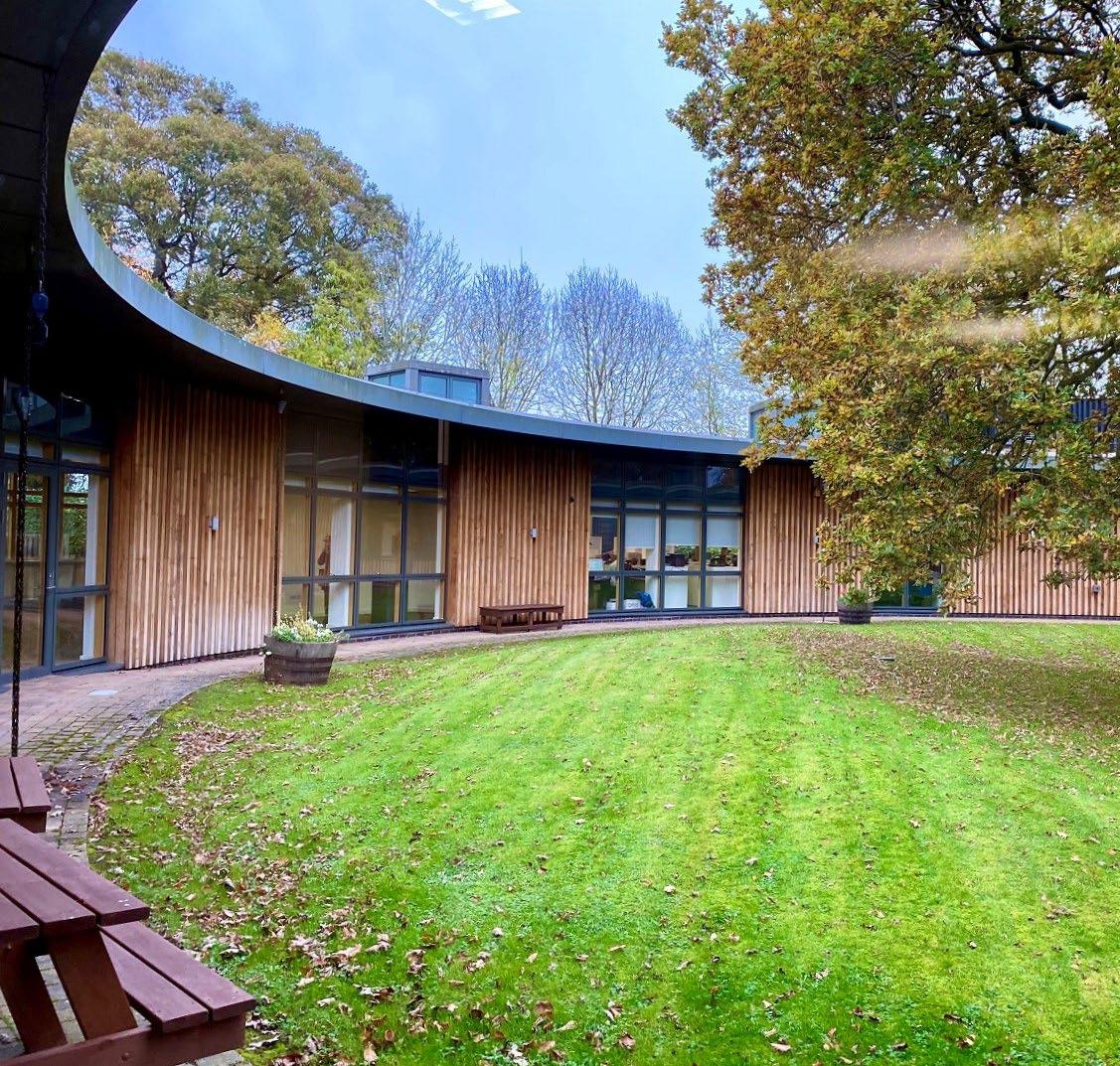
from the office 29 endurancegb.co.uk | regulars Office Update
Gauging the efforts of our horse in work
By Esther Groen from Groen Equestrian – endurance coaching
In the previous issue, I told you about the fuel efficiency of our horses, using a hybrid car analogy. Unfortunately, I won’t be as anecdotal in this article, but I’ll try to illustrate where I can.
Last time we learned that higher intensity work will use more of our horse’s petrol - glycogen - and that glycogen is a depletable fuel source that can even have harmful effects when we go into anaerobic mode. Running low on glycogen will cause potential fatigue and loss of power. For our endurance horses we want to use the ‘electric-power mode’: running our horses on non-depletable fatty acids of which every horse has more than plenty. We do need a lot of oxygen for this fuel utilisation however, and this can be a limiting factor for some horses (the ones with smaller heart and lung size, and/ or those that have fewer type 1 muscles). To optimise fatty acid use and stay in the cheap fuel mode, we need to train all our horses the right endurance way so they will default to this mode of fuel as much as possible.
Horses are amazing athletes, and a horse’s body is much more able to change its fuel efficiency than a car (or even a human). A car has a set ability, with fuel efficiency that will only change to some extent with our driving style and some minor external parameters. Our 1 horsepower has a much greater ability
to improve their output, they will get a better and more economical fuel efficiency when we train them. The body will add more ways to get oxygen to the muscles by making more capillaries and adding mitochondria which will actively improve fatty acids use at higher intensities of work, whereas before it would have had to resort to using less efficient glycogen. This will also delay the moment the horse needs to resort to anaerobic measures.
Fitness matters
Any training will have this benefit: the fitter a horse becomes, the higher the anaerobic threshold will become. An unfit horse might have a threshold of 65% of the maximum heart rate, a very fit horse can go as high as 85%! This will make a huge difference in favourable fuel use. For endurance, we have to make the aerobic pathway the default option even more than for other sports, because we are working our horses so much longer than anyone doing dressage, jumping, eventing, racing or even hunting which can also go on for a good portion of the day. The big difference is that hunting is much more stop-start and there is a lot of waiting involved.
So for endurance we need to stay in aerobic settings as much as possible, and the way to do that is to stay within a certain level of intensity. But how do we know how the horse is finding the intensity of work we

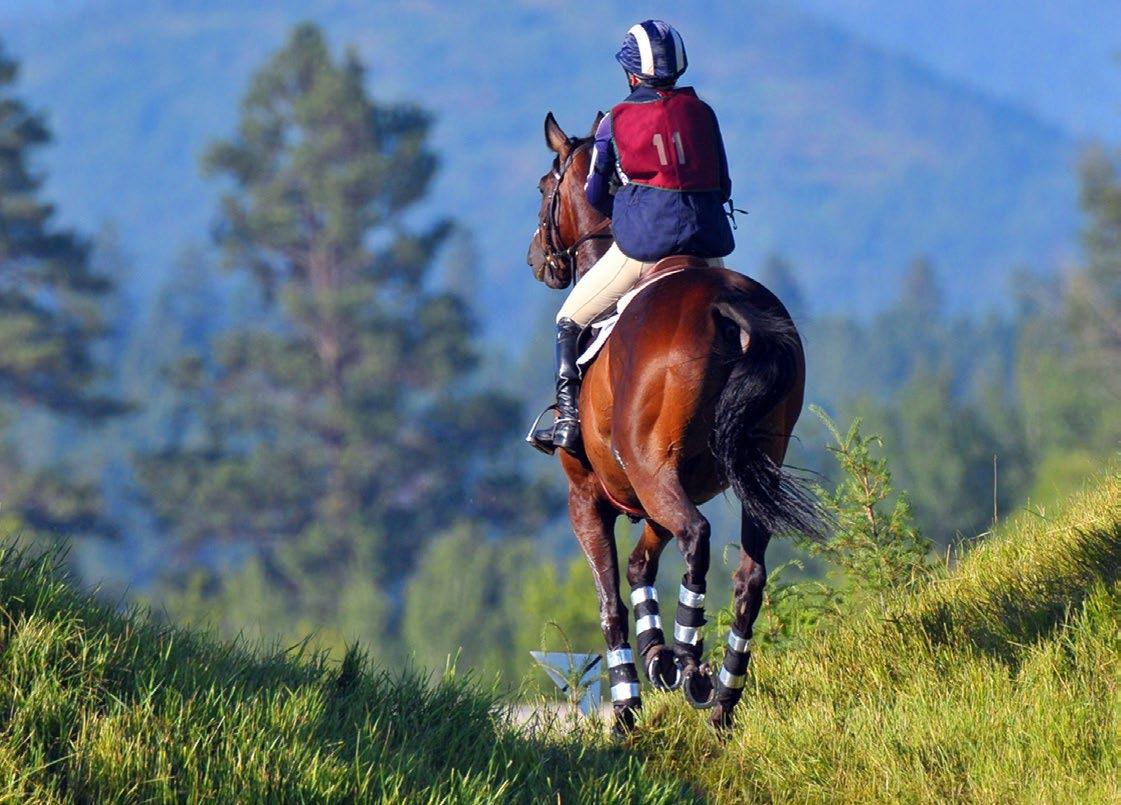
ask of it? Unfortunately, unlike our car, we don’t have a lovely panel of gauges to see our speed, fuel efficiency and how much petrol we have left, installed. Perhaps a flaw of the evolution of sport horses? And while we are finding flaws in the lack of information about what is going on inside our horses, can I request to add a green light when a horse is ready for its next training and perhaps a fault light with a printout of problems when there are any? Of course, there will never be such an option and we have to rely on other ways to know what is going on by observation and often feel.
What we feel when we are riding is one part of knowing what we are doing, but what we feel can sometimes be deceptive. As a rider, we interpret the circumstances based on our state of mind, our own fitness and our preconceived (sometimes humanised) ideas of what our horse is feeling. Research has shown that riders gauge the effort of an exercise for their horse quite differently than the objective parameters given by the horse’s heart rate monitor. There was a substantial link to how mentally challenging the rider felt an exercise was, compared to the actual physical effort for the horse, but also a distinct correlation between rider fitness and how tough the rider thought an exercise was for their horse. More experienced (and perhaps fitter?) riders were more accurate than more novice riders.
training features | endurancegb.co.uk
Training
30
Naismith Images/Shutterstock
Keeping track
To translate this to our endurance perspective: A rider might find a cold, windy, boggy ride very hard, the ground might be a bit more slippery and we might struggle with keeping warm. But for our horse these conditions might be quite okay, the rain is cooling, but not cold due to the movement, and because the ground is a bit more slippery we are going slowly, thus staying within a much lower to moderate intensity for which the horse is more than capable. The other way around is as important, our horses can give us a different feel depending on company, the time of year, or where they are. Especially adrenaline in an excited horse can give us a false feeling of fitness as it seems the horse goes effortlessly and is fit and happy, but the impact on the system can be quite a different story.
So, to really know how hard work is for our horse we need an impartial view. We do have tech to help us, GPS watches to measure speed, distance, pace and average speed and hopefully also elevation. This can give us a lot of information on what we have actually done, and I would really advise you to have some system of logging. I love logging all info, but then again, I’m a massive nerd. I’m such a nerd that I have spent the majority of the 2021 and 2022 winter months devising an index that gives an idea of the intensity of work we have done, based on a lot of these parameters you can get out of your GPS watch or riding app.
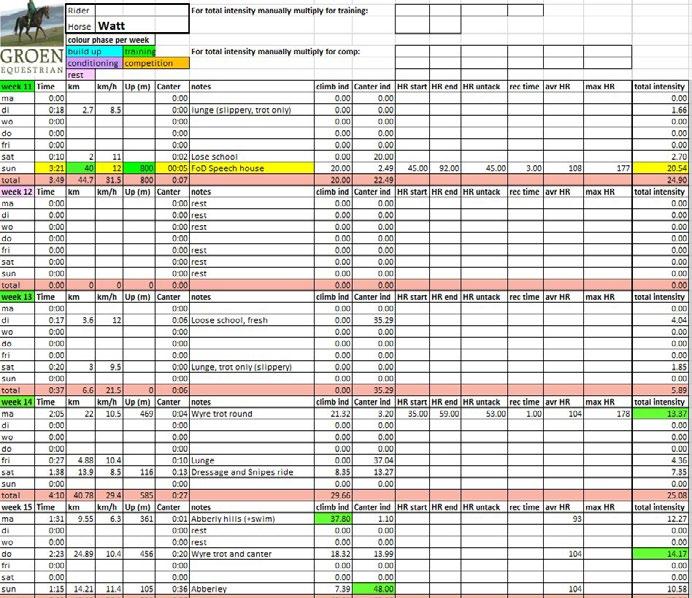

Distance, riding time, average speed and if at all possible (and reliable, because some mobile
apps are not very accurate) elevation, are good parameters to keep track of your progression in training. I also keep track of how many minutes I have cantered during my total ride time and use that in an index: the canter index. Double check if you have an app that gives you gaits as it can very much differ per horse if this is accurate. We once did the exact same amount of cantering with two different horses, both with that app on, and I also checked on my GPS watch later. The app gave a totally different canter time for the two, and on the watch it was different again! Besides the canter index, I also make a climb index. These two serve to keep an eye on the most important indicators for higher intensity. The climb index is meters of elevation within my total distance in km.
The best bit of tech that will really show how the horse feels the intensity of the work is the heart rate monitor. These come in several shapes and sizes, both in the way you can use them, but also they can come with a different price range. I will tell you more about how to use the different options in training and competing in the next article.
About Esther
Esther runs Groen Equestrian –endurance coaching. Visit her website: www.groenequestrian.co.uk for more information.
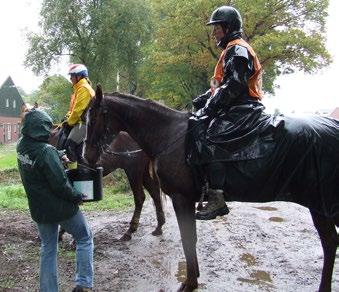

training
Anaerobic threshold novice vs experienced horse
Different apps
How we feel in the ride
31
Logging
Water works
Nick West MRCVS discusses hydration, electrolytes, dehydration and cooling of the endurance horse.
These topics have been covered many times, and we all know something about their importance, so in this feature I will try to pull together some of the salient points.
A 450-500kg horse can lose 20-25 litres of fluid during a two-to-three-hour ride, although there are a lot of variables and the volume lost can be less – or a lot more – than this. This fluid is lost by sweating, during respiration, in urine and in faeces. Sweat contains electrolytes (salts), so these must be replenished from the diet or by supplementation.
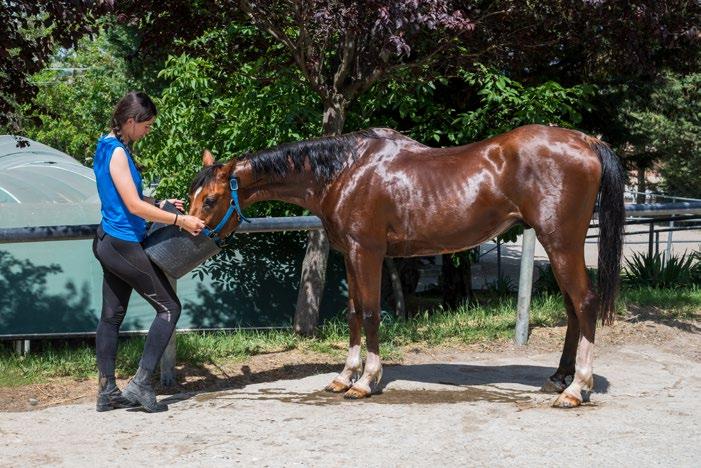

During a pre ride vet examination (also at vet gates and the final vetting), the hydration status of the horse is assessed by a skin tent test, whereby a pinch of skin is raised by forefinger and thumb at the point of the shoulder. This is then recorded on the vet sheet. With a well-hydrated horse this will, when released, go immediately flat whereas when dehydrated, the skin tent will remain raised for two seconds or more. As with any manual test there’s some variation in how this test is done, but by using the ‘point of shoulder’ it helps standardise the procedure.
You can also judge the hydration status by feeling inside the upper lip where the gum and the inside

of the lip should be moist. If it’s dry, then some level of dehydration is likely. As with any test or judgement of your horse, recognising the normal is important before you are reliably able to recognise the abnormal, so practise this at home.
To help avoid dehydration we need to assess the environmental conditions and make appropriate plans for the day, reduce stress, encourage drinking and feeding, and use electrolytes where
appropriate.
In my younger days riding, I was spun at the Three Rivers Ride at a vet gate when the vet assessed the hydration by doing a skin tent test in the middle of the side of the neck. The skin tent stayed raised, as it often does at the mid neck site, even when the horse is well, so I hacked gently back to the venue on a well hydrated horse! Since then, the test has been standardised as described.
dehydration features | endurancegb.co.uk Dehydration
cctm/Shutterstock.com cctm/Shutterstock.com 32
TOP TIP
Getting a weather forecast for the venue and ride is advisable, as on an overcast cool drizzly day a horse is less likely to become dehydrated compared to a hot, dry day.
Four routes to give fluids
• Voluntary drinking at streams and troughs
• In sloppy foods and in grass (85% water)
• Via a naso gastric tube (a vet procedure)
• Bagged fluids by intravenous drip (a vet procedure).
Coping with stress
A stressed horse will have a rapid gut transit time and will produce volumes of watery faeces.

A horse that is stressed during the journey to the venue will lose valuable energy and fluids, probably won’t eat and certainly won’t drink, and risks arriving slightly dehydrated. If he/she is also a fussy drinker, the day is not getting off to a good start.
Many people find that giving a probiotic, at the stress or treatment dose, the day before and on the morning of the journey, helps calm the horse during transport.
Remember that a three-to-four-hour journey is considered to be like a good half a day’s work for a horse, so if your journey is long, and/or your horse gets stressed during transit, seriously consider travelling the day before and corralling at the venue or nearby. The benefits to the horse, and to you, and to the quality of your ride, are considerable.
Encouraging water intake
Some horses will readily drink anywhere, and some are very particular about the qualities of the water as well as the aesthetic qualities of what the water is presented in. This is something to consider in your training schedules at home and on hacks and training rides.
Everyone’s ideal horse will drink readily from streams, cattle troughs, ponds, clean puddles and unfamiliar buckets and will take on board water that’s fresh from the mains smelling of chlorine, as well as lovely naturally flavoured still water from a large open cattle trough, as well as moving muddy water at their feet when wading through a stream.
Beware of training your horse to only drink at the one trough you pass on every ride out from the home stable. Horses have a strong ‘association of place’, and you may think you’ve trained him to drink at any trough, but he may interpret it as being trained to drink only at that particular one.
If your horse is fussy, bring water from the home troughs or streams and familiar buckets.

Some people use apple juice and sugar beet water to disguise different waters, so try this at home first as it certainly can work.
Feeding is important in the days before the ride, during the journey, on arrival at the venue and at crew points and vet gates, and after the ride to aid recovery prior to the journey home.
Again, training and familiarity with these feeds is vital and trying a new food at a crew point or at the venue is not a good idea.
Although it’s not commonly done, filling a big hay net with cut or pulled long grass gives the horse
the opportunity to eat grass at 85% water content compared to hay at 8% during the road journey and at the venue when tied up. Taking advantage of any grazing grass in the venue field is valuable for energy and for hydration.
Electrolytes lost during sweating have to be replaced with powders in the sloppy food or water, and/or with syringe pastes given by mouth. Again, familiarise your horse at home with these products and train him to accept them by whichever route you intend to use. And remember that a horse who won’t tolerate a worming syringe is not likely to accept an electrolyte syringe in his mouth.
Generally, with most brands of electrolytes, it’s recommended that they’re given at a maintenance dose daily in the season if the schedule is busy, or at least for a few days before the ride. There are many good products available so choose one that suits your intended schedule and follow the instructions.
If a horse is a fussy drinker, be careful with oral electrolyte pastes as they will draw fluid from the blood and body tissues into the gut where the paste is, and effectively dehydrate the blood and tissues somewhat. The horse must drink around the same time as taking the paste.
To slosh or not to slosh
What are we trying to achieve by sloshing?
• To cool and revitalise the tired horse
• To help lower heart rate prior to the vet check
• To save energy by speeding up recovery
• To reduce further sweating and so save fluids and electrolytes.
Body heat is lost from the horse’s hot skin to the cooler water by conduction, and the important words here are skin, hot and cooler. The hair that makes up an equine coat has very efficient thermal insulation properties, so the unclipped areas of the horse will not conduct heat away from the body to the water much at all. Unless you’ve washed all the natural water repellent oils from the coat, the water will be shed off anyway. Therefore, sloshing a clipped horse is a lot more efficient. Also, on a warm day sloshing water may not be cool and if the
dehydration 33 Piaffe Photography/Shutterstock.com arthorse/Shutterstock.com
temperature difference from horse to water is not much then it’s not very effective.
The legs have a large surface area to volume of tissue/muscle ratio and the blood vessels are close to the skin, so sloshing the upper legs can cool the blood well. If the legs aren’t clipped, this won’t be so effective, as discussed above.
I remember seeing a Middle Eastern team with a pallet load of two litre bottles of mineral water that was kept in a powered refrigeration unit. This was used for sloshing and yes, it sounds extravagant, but it certainly would be very efficient because of that important temperature difference. Heat is also lost by evaporation of the water sloshed onto the skin. The rate of evaporation is improved by low air humidity and air movement. Air movement over a standing horse on a still day is nil obviously, but this is where the sloshing of the horse as it has just crossed the line is so valuable, as the walk back to the trailer or crewing area creates air movement
and speeds up cooling by evaporation. So, using more bottles of cool slosh water during the walk from the line to the trailer would be very effective. Humidity on any particular day isn’t something we can do anything about but knowing that cooling by evaporation is less efficient when humidity is high, makes using cooler water more important.
At the trailer, standing the horse in a breeze will increase evaporative heat loss. The ‘slosh and walk’ technique on a still day will do the same and this will also help stop the horse stiffening up prior to the trot up, but don’t let it stop the horse from drinking or eating the sloppy food.
How much sloshing?
One guide is to feel the water running off under the horse. If it feels warm, keep going. At rest the horse is no longer working his muscles and producing the heat he was half an hour ago, so care must be taken not to overdo sloshing.
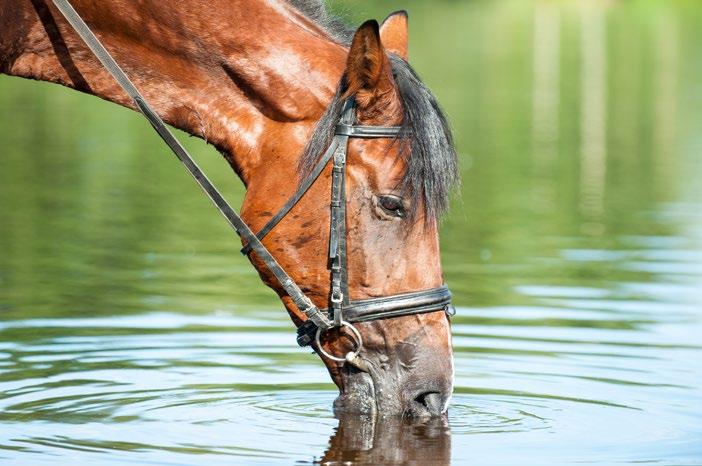
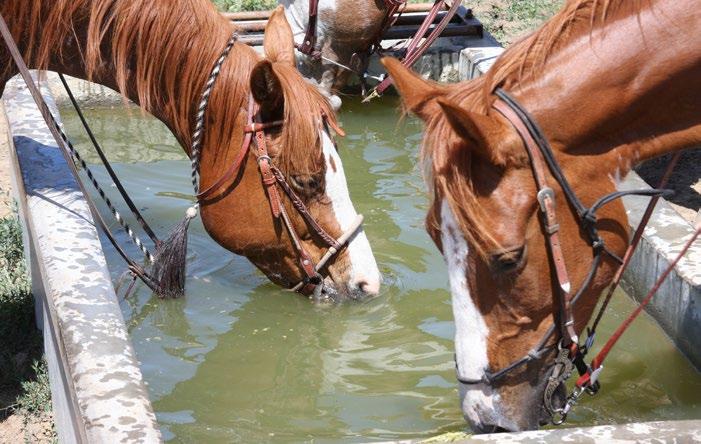
Scraping after sloshing is a point open to debate. This process removes water that would otherwise evaporate and in my opinion it’s better to keep sloshing, scrape at the end of sloshing, then towel dry and whisp at the same time to keep the surface of the skin and muscles warm.
The suitability of these final points depends on the weather. If it’s baking hot then walking a wet horse to the trot-up area is fine, whereas on a cool, overcast, breezy day, drying and whisping, and using a light cooler rug is advisable. Again, taking note of the current environmental conditions and adjusting your procedures accordingly is a good strategy.
Just because you ride an endurance horse doesn’t mean you have to slosh without thinking about it. Often, particularly at early and late rides of the season, we see horses presented (by an owner in three warm layers and woolly hat and gloves) for final vetting and trot-up who have been over cooled and are starting to shiver. This means their heart rate can be rising, or at least not reducing as expected. So we had a plan. If you notice some big buckets of cold water with ice cubes at the vetting area, these are to pour over the rider/owner/handler of the over sloshed, shivering horse to illustrate the effects of windchill on a wet body. Probably not a popular plan but illustrates the problem!
If it’s a cold and breezy and maybe damp day, then a damp sponge to wipe down, a few towels to whisp dry and a light cooler rug and a gentle walk around may be enough. Taking the heart rate will help you monitor the effect of the cooling down procedure and if it’s falling nicely, and the horse is eating and drinking, then there’s no need to continue sloshing in most cases.
The effects of windchill are not to be underestimated. At an air temperature of 12C and a windspeed of 15mph, it will feel like 1.5C –pretty chilly.
In summary
Know your horse and his likes and dislikes, train and practise at home, remember horses are creatures of habit and association of place and event, and use this to establish useful and reliable habits during your training and hacking rides from home.
Try to get the procedures you intend to use at rides to be ‘normal’ for your horse, for example, normal to…
• have cold water thrown over the withers and shoulders
• drink from streams and troughs
• drink various qualities of water
• have electrolytes in the sloppy feed
• have an electrolyte paste syringe in the mouth
• travel calmly and be corralled or stabled in a strange place.
And finally, learn from your horse and from each other, and consult your vet and nutritional advisor.
dehydration features | endurancegb.co.uk
rancho/Shutterstock.com
34
AnnaElizabeth photography/Shutterstock.com

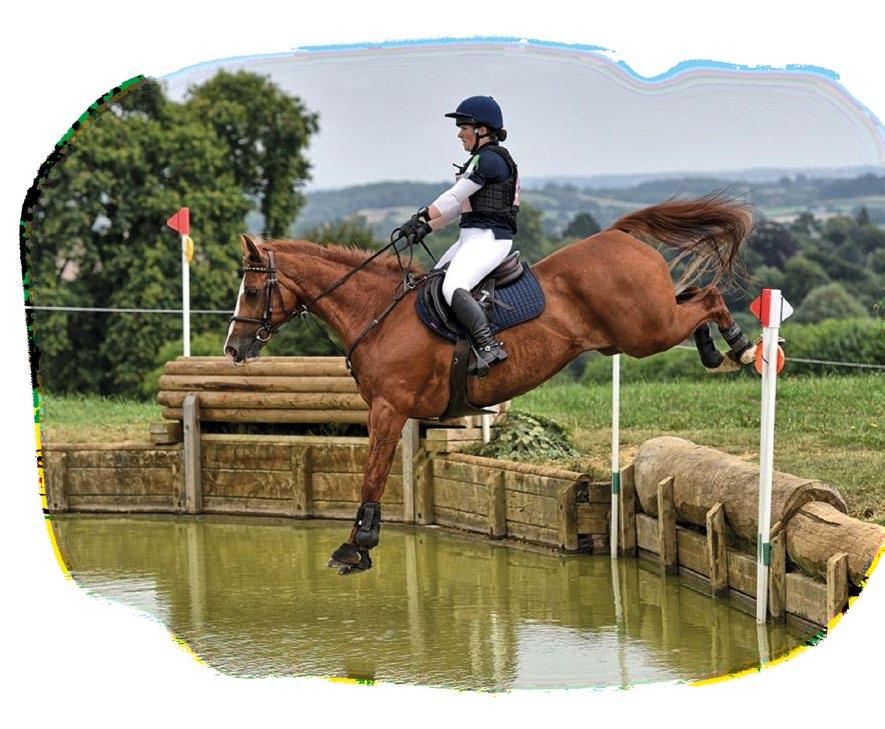

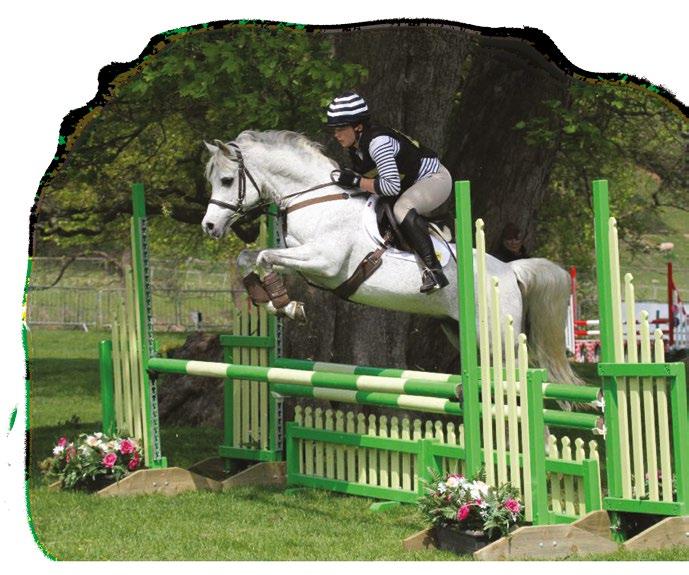



Meet the face behind Pioneer Endurance
Zoe Lindop talks to Julie Jones about her Cheshire-based workshop, where she successfully runs her own bridle wear company Pioneer Endurance.
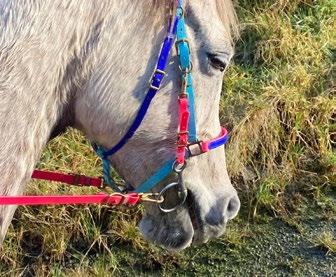

In a leafy corner of Cheshire, Zoe Lindop creates her stunning endurance bridle wear. Her workshop is a riot of colour from the many reels and boxes of biothane lining the walls. Small piles of bright biothane sit by her machine waiting to be turned into the bespoke bridles her customers have ordered.
Zoe has worked with horses all her life and was a riding trainer for many years, including being the riding teacher for the British under 21 and senior endurance teams for a long time, visiting many championships with them. She then crewed at the highest levels for several riders, including Susan Cox, Georgina Vaughan and her mother Tricia Hirst.
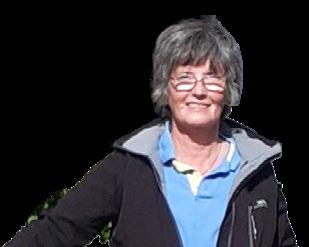
How it all started
Zoe has always tinkered around with tack, making adjustments and improvements. However, before her interest in endurance began, she worked with a stunt rider in France.
sponsor focus regulars | endurancegb.co.uk
Sponsor Focus
Razil in his bespoke bridle, developed with Zoe in her workshop by Razil’s teenage owner Edith Jones
36
Zoe with her Manchester terriers
Appropriate tack just couldn’t be found, so she helped to make it.
Pioneer Endurance itself started when she was teaching endurance riders and crewing at top level. She noticed that the choice of endurance tack was quite limited and didn’t suit all horses. And as most endurance tack was set sizes, the fit was generally poor. Zoe had previously been involved in Concours D’Elegance driving and learned how correct fit and width could make such a difference to
showing off a horse at its best. She decided to do something about the endurance tack issues, so developed all her ideas into a range of bespoke tack. It was successful and the company was born.
The company is named Pioneer for two reasons. First (and not many people know this), she was the first person to import Kune Kune pigs into Europe from New Zealand, so she gave her pigs the ‘Pioneer’ prefix. Second, when working on her endurance tack, she

has so many ideas and has pioneered so many innovations that the name was appropriate. Zoe is committed to developing and continuously improving her products, with new ideas and designs being added to her range constantly. “I want to create my own designs rather than copying others,” she commented.
Here to help
As Zoe was working with the under 21 and senior British teams, it seemed the right thing to provide them with their bridle wear, which Pioneer did for many years on and off. Nowadays, she sponsors in a different way. “I want to reward my loyal clientele with discounts and the occasional gift of tack to thank them for buying from me and supporting my business,” added Zoe.
Her long friendship with Georgina Vaughan is still going strong and Georgina is still her ‘test rider’ for any new products being developed. However, if a customer wants something that’s not in her extensive range of bridle wear, she’ll work with them to develop what’s needed.
Her website (www.pioneerendurance. com) covers everything that she offers, and it’s easy to order from there, but Zoe is always happy to advise and be on the end of the phone as the order is placed if needed.
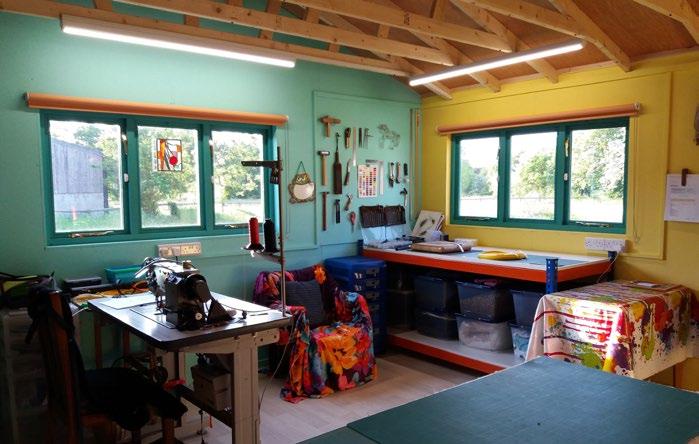
A range of bespoke biothane dog collars has followed the bridles because when she’s not working, Zoe competes in a variety of disciplines (scent trials being favoured currently) with her two Manchester terriers Luna and Seren.

The long-term ethos of Pioneer Endurance is that everything is truly bespoke, designed with the customer to complement and truly fit their horse. Her designs have come about as a result of her long-time experience with horses, teaching and crewing at endurance at the highest levels, as well as working with and sponsoring the British endurance teams.

Find Out More
For more details, visit www.pioneerendurance.com
endurancegb.co.uk | regulars
“I want to create my own designs rather than copying others”
Zoe's brightly coloured workshop
Competing with her dog
The senior endurance team at Sartilly, Normandy
37 sponsor focus
Zoe and her grey Andalusian, on the first floor of the Eiffel Tower
Feeding the endurance horse for stamina and performance


Together with a training programme that maximises fitness levels, correct feeding is of paramount importance to enable each horse to train, compete and recover successfully.

Joanna Palmer, Nutritionist for Allen & Page, advises on the best nutrition for energy and performance.
Unlike sprinters who require short sharp bursts of energy, our endurance horses need predominately slow-release, stamina-giving energy to fuel their long-distance exercise, and this should be reflected in the diets we feed them. Horses obtain energy from three main dietary constituents, namely fibre, glucose (from starch) and oil. This energy is then stored as glycogen in the liver and muscles and elsewhere in the body as fat. Fibre and oil are good sources of slow-release energy, whereas cereals including barley, oats and maize contain high starch levels which provide fast-release energy. It is well recognised that fast-release energy can have a negative effect on some
horses’ behaviour, causing them to become over-reactive, sharp and excitable. None of these are desirable attributes for an endurance horse where control and focus during training and competition are vital for success. Slowrelease energy is much less likely to have this type of effect on behaviour.
A high-calorie bucket feed such as Muscle & Focus or Soothe & Gain, that utilises fibre and oil as the main energy sources is the most beneficial to meet the slow-release energy demands of endurance horses. Fibre is digested in the hind gut, where millions of bacteria ferment it into volatile fatty acids (VFAs) which are used by the horse’s body as a source of energy in the presence of oxygen. This aerobic metabolism is how endurance horses gain most of their energy, unlike racehorses who predominately work at a higher intensity and need to rely on anaerobic metabolism of glycogen to meet their energy needs. The slow process of fibre digestion means that VFAs continue to be absorbed long after fibre is eaten; this resulting energy is then available
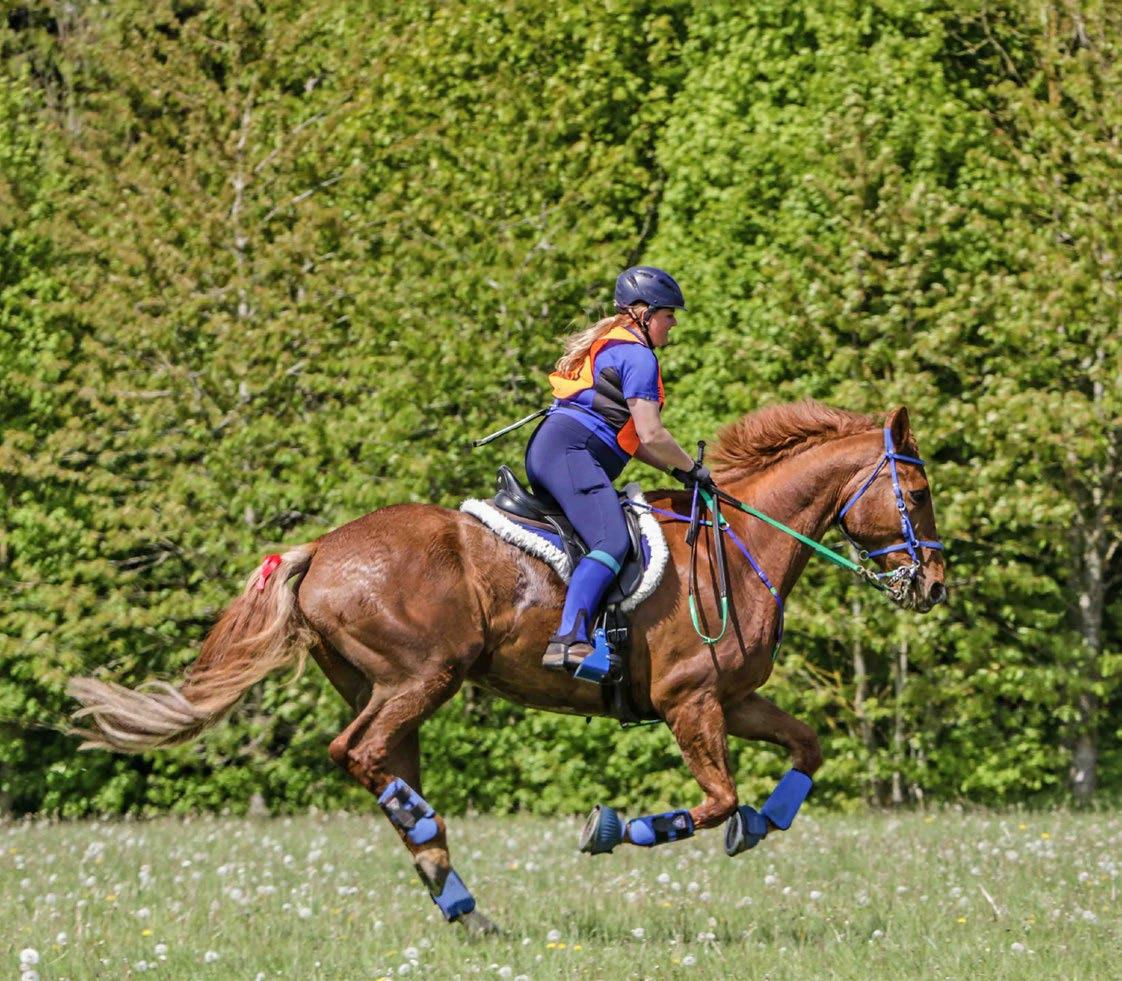
Feeding
38 feeding features | endurancegb.co.uk
Allen & Page Muscle & Focus
to the horse for a long period of time during exercise.
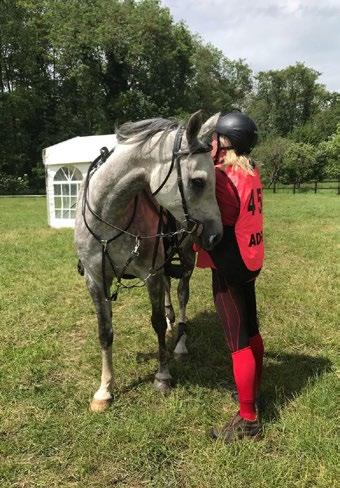
Some fibrous ingredients are termed ‘super fibres’, which means they provide much higher levels of energy than forage and are particularly useful in the diets of endurance horses. Sugar beet pulp is one such ‘super fibre’ that is commonly used in feeds designed to provide slow-release energy. A feed that incorporates sugar beet will require soaking before feeding which is highly beneficial in increasing an endurance horse’s water intake, both at home and out competing.
Feeds that are high in oil are more energy dense than traditional cereal-based feeds. In fact, oils contain nearly 2.5 times as much energy as the equal weight of carbohydrates, meaning they are an essential part of diets for performance horses, helping to maximise energy intake without over-feeding. Horses digest oil well and when performing aerobically, endurance horses will use up their fat stores as the first energy source, meaning stores
of glycogen in the muscles remain available for anaerobic metabolism should a sprint finish be required! This also aids in recovery post-race, as horses who have not depleted their glycogen stores will be able to return to exercise sooner than those who are on a higher starch diet. Looking for a feed that contains extra ingredients to support recovery is also beneficial. Muscle & Focus provides elevated levels of antioxidants vitamins C and E to aid in ‘mopping-up’ free radicals produced during hard exercise, providing support to the musculoskeletal system.
Alongside providing the right type of energy, to be able to build strong muscles and topline, provision of quality protein is also necessary. Aside from water, the major component of muscle is protein, and a horse’s diet must provide the correct balance of amino acids (the building blocks of protein) to allow them to develop and maintain strong, healthy muscle tissue. The most important amino acids for horses are lysine, threonine and methionine,
which are all essential amino acids that cannot be made by the horse and must be supplied in sufficient quantities in the diet. A feed or ingredient may have a high protein level, but if it does not contain sufficient quantities of all the essential amino acids a horse requires, it will be poor quality protein. Feeds containing 12% protein are appropriate for active or performance horses as a step up from the relatively low protein feeds (below 10%) that are sufficient for other horses in lower levels of work.
Whatever your horse’s level of work, fibre should always form the majority of his diet. Forage should ideally be offered on free access basis to allow the horse to ‘trickle feed’ and mimic his natural grazing and chewing behaviours. This essential fibre is not only vital for digestive health and as a source of slowrelease energy, it also holds a reservoir of water within the hind gut, helping to maintain good levels of hydration. This water and the electrolytes contained within it are crucial for health and performance. However, whatever their level of work, endurance horses cannot rely on forage alone to meet their energy needs and require a suitable bucket feed to provide additional nutrition and an energy level to match their requirements. An endurance horse’s need for high-fibre, low-starch nutrition as is provided by ad-lib forage, should be reflected in the choice of bucket feed too.


For more information
For more information on feeding the endurance horse visit www. allenandpage.co.uk or call the friendly nutrition helpline on 01362 822902
feeding 39
Fibre should form the majority of every horse's diet
Feeds that need soaking increase an endurance horse's water intake
Kings Forest Ride in 2019
A warm welcome awaits in Longnewton in September
Preparations have begun for the Scottish Championships which will be held at Longnewton in the Scottish Borders again this year on the 8-10 September.

A lot of readers who competed in the Home International last year from all corners of the UK will remember those lovely grassy tracks which went on forever, the undulating hills (yes, we do have some in the Scottish Borders) and the great camaraderie and fun that was had by all over the weekend.
This year we have one-day classes each day from pleasure distance through to 120km and two-day classes from 60km to 160km, so we are hoping that you’ll all come and join us in aspiring to achieve your goals, whatever they might be, over the weekend.
Our route organisers will be offering similar routes to those last year, and there will be three different 30km loops and two different pleasure routes; vet gates will be a mixture of at the venue and remote. The terrain will be varied with tracks along fabulous riverside fields, endriggs and as little roadwork as possible. We just need the endurance gods to give us some decent weather, though that we cannot guarantee, but being endurance riders we’re sure we will be up for anything.
Scottish Endurance Riding Club
News
A warm welcome awaits visitors to SERC Dumfries branch
We are a small branch just north of the border, with plenty to offer everyone. Dumfries & Galloway is a beautiful part of Scotland, with a dramatic coastline of rocky and sandy beaches, and acres of forest and green spaces inland. There is a lot to do here, with or without horses. We have some great visitor attractions, leisure facilities, beautiful scenery, wonderful parks, excellent cycling routes and several museums and galleries, which are ready to welcome you.
It's easy to reach our region and we have a good number of rides to tempt you. Most of our rides are closer to Dumfries, but we have had rides out in the west too. The region is a lot larger than people think. From east to west it’s probably about 2.5 hours of travelling. There is so much scope for differing rides, from forestry to open fields and
moors, to beaches. We host rides in numerous areas across the region and here are a few rides for this year.
We started our season with a ride at Ae Forest, Nr Dumfries on 26 February. This is a great allweather route with varied terrain. Not too hilly, so great for early in the season. We usually have a pleasure route and a taster route for riders to enjoy. Parking is limited, but we can still manage to get 20-plus vehicles in and even more riders, if people share transport. As it can often be a bit cold at this time of year, we have soup, teas and coffees available for after the ride too. We also run the ride at the end of the season, so look forward to welcoming you then.
Ae might be the smallest place name in the UK, but this is one of the largest woods in Scotland –over 10k acres! It offers a superb variety of walking, horse riding and mountain biking trails (part of the
There will be a catering van on site during the day and we offer a delicious Saturday night supper so you will have a chance to relax and socialise –bring your own booze!
The Championships’ committee are beavering away behind the scenes but in order to make it a great success we need you, whether SERC or Endurance GB members and temporary members, so come along and enjoy the fun, camaraderie and riding through beautiful countryside on lovely tracks.
Visit: www.scottishendurance.com/Events/ Calendar to sign up.
seven Stanes network) plus bike-shop and cafe, and it suits families too.
Our next ride took place on 2 April at Black Esk, Nr Boreland, Lockerbie. This is another forestry ride with beautiful views around the reservoir. We usually run a taster class, plus short and long pleasure routes, so there’s something for you all to enjoy. There are some excellent tracks on the Twiglees side of the route, too, and this ride is also on our calendar for later in the season.
Black Esk Reservoir is a popular fishing and beauty spot covering 110 acres and the nearest towns are Lockerbie and Moffat. The reservoir supplies drinking water to towns and villages in Annandale and Eskdale and previously used to supply water to Chapelcross Nuclear Power Station. The reservoir sits on the Black Esk River, which merges with the White Esk to form the River Esk to the east of Moffat. The reservoir has
40
scottish endurance Scottish Endurance
All photos courtesy of Kris Clay TopGear
regulars | endurancegb.co.uk
Photography
an earth embankment dam and is surrounded by plantation forest.
Our next ride was at Tinwald, Nr Dumfries. This is a two-day ride that took place on 29-30 April. We offer everything from a taster class, up to a two-day 80km class. The route is very varied and consists of some lovely bridleways, quiet lanes, open fields, hill climbs and stunning views from the top of Hightown of Tinwald. This ride is a good challenge for horses, as it is hilly – a true endurance ride. It includes sections known locally as ‘the rollercoaster’, ‘the big dipper’ and ‘the gallop’. It’s a fast-flowing ride with a bit of everything.
There are trophies for the winner of the twoday 60km and two-day 80km classes. We run pleasure pairs (based on performance formula) and there are various other prizes given out over the weekend too.
Our photographer, Kris Clay, is usually with us
Sheep Park, a wonderful weekend of endurance
• Incorporating the Capercaillie Challenge, the dates for SERC Highland Branch’s weekend of endurance are 29-30 July 2023.
• Under the direction of Brenda Burnett, the branch is putting together a 120km single loop, incorporating past rides which Brenda has put on – Poyntzfield, Belmaduthy, Rosehaugh Estates and the Culbokie Rides.
• The 120km route comprises an 82km loop with all vet gates out on course, Then, on to a completely different 40km loop, only returning to the venue for the finish.
• The route has very little road work. In all it is estimated that there is only 4km, yes 4km, of road work!
• It’s mostly forestry tracks but many are soft fun tracks, plus fields and moorland.
• The terrain is mostly flat with a few hills but no major climbs and very few gates.
• All vet gates have water and toilets.
• All other supporting classes are along the same routes with vet gates out on course.
• Our pleasure rides are two different routes over the weekend.
• Our venue sports the most amazing view
and his photographs are fabulous. It’s great to have a reminder of your weekend.
There is camping and corralling all weekend and a supper in the marquee on the Saturday evening. We usually have some fun and frivolity after the meal too – bingo or beetle (but drawing a horse) are always popular. It’s a great weekend and always enjoyed by all. We are very lucky to have excellent landowners in this area, who are very accommodating in allowing us to run the ride. Indeed, many clear all their stock from the fields, to further facilitate us. This ride is also run towards the end of the season, as a Halloween ride from a smaller venue – lots of fun with fancy dress costumes too. Hot refreshments are usually provided.
We will be running a ride on the Rammerscales Estate, Lochmaben, in the summer. This will hopefully be taster, pleasure and 30km competitive
classes. A great ride over quite hilly terrain and some fabulous views, we are hoping to get over the moorland to the Monument which will provide a lovely extension. This is another fast-flowing ride with plenty of canter opportunities.
Rammerscales House is a beautiful Georgian mansion, and the Laird has been very supportive of SERC rides, the hunt and also allows cross country competitions on his estate.
New rides
We are busy working on new rides for the region too. There are plans to resurrect the ride at Cally Woods, Gatehouse of Fleet. This was always a very popular ride, with some lovely sections up to Disdow Hill and long canter tracks. This will provisionally be a pleasure ride, but we will hopefully add competitive classes next season.
We are also looking to put on rides near Moffat and Thornhill this season. Information will be available on Clubhouse, as the details are finalised.
I hope this has given you an insight into our beautiful region – why not venture north of the border and come and join us in Dumfries & Galloway. We will give you a warm welcome and look forward to you riding with us.
All entries to be made through SERC Clubhouse, www.scottishendurance.com/ Home
Further enquiries to Penny Hudson, Ride Secretary, SERC Dumfries Branch. Penny can be contacted through the Message Me facility on Clubhouse.
over the Cromarty Firth, with plenty of space for corrals, camping and on-site toilets.
• There will be a catering van on site which is going to stay for the Saturday night and provide hot food. If you’d rather eat indoors there are various pubs and a pizza house not too far away in Cromarty and Culbokie.
• If you’re not into camping, the area has numerous Airbnb, Chalets, B&Bs nearby but I’d recommend you book early as this area is very popular with visitors.
• As this ride is hosting the Capercaillie Challenge we are looking forward to welcoming riders from all our branches in Scotland to the Highlands. We would also be delighted to welcome riders from our friends in EGB.
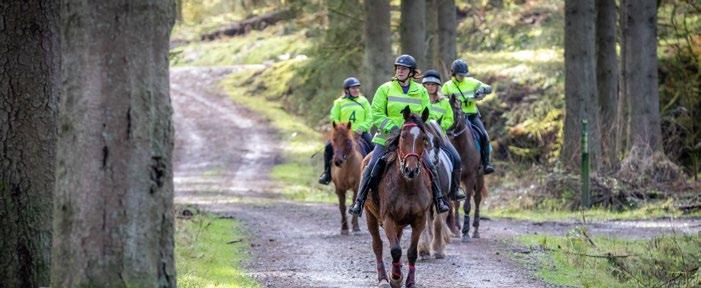
All entries should be done through SERC Clubhouse, www.scottishendurance.com/ Home
For more information, please contact Fiona Henderson, Chair of Highland Branch, through the Message Me facility on Clubhouse. The complete list of classes is shown in the box to the right.
Saturday
Gated/ER: (CER)
• 120km [ 82 + 42]
• 100km [ 64+40]
Competitive (GER)
• Two-day 100km [ 64+42]
• Two-day 80km [ 50 + 30]
• Two-day 60km [ 30+30]
• 80km [82]
• 60km [ 64]
• 50km [ 51]
• 30km
Pleasure - approximate distance 20km
Sunday
Competitive (GER)
• Day 2 - Two-day 100km; 2 day 80; 2 day 60km
• 40km [ 42]
• 30km [ 32]
Pleasure approximate distance 24km.
41
scottish endurance
Remembering those lost along the way
Piers Geddes, 1950-2023
Piers passed away on 20 April 2023 aged 73. He is survived by two elder sisters and a brother.
Many will have seen him around Endurance GB venues as rider, helper or crew: his physique, at well over six foot, unmistakable. Piers rode over 4,650 competitive km with Endurance GB on his various horses, recently Boreina and Gully, and of course his beloved Flynn. He almost certainly rode over double that in his various journeys with horses (or ‘horse walks’ as he called them, since he would often be on foot as much as ride) travelling from Usk to Norfolk, the length and breadth of Wales, along the Welsh marches, and many other trips.
Piers was brought up in England but moved to Wales many years ago, developing a deep and lasting love for the people, culture, language and landscape of what he called his ‘adopted country’. He was a familiar figure riding and walking in the Black Mountains where he had made his home, universally
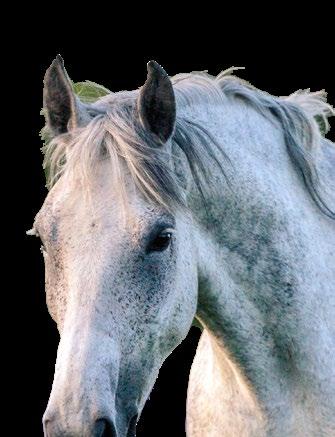
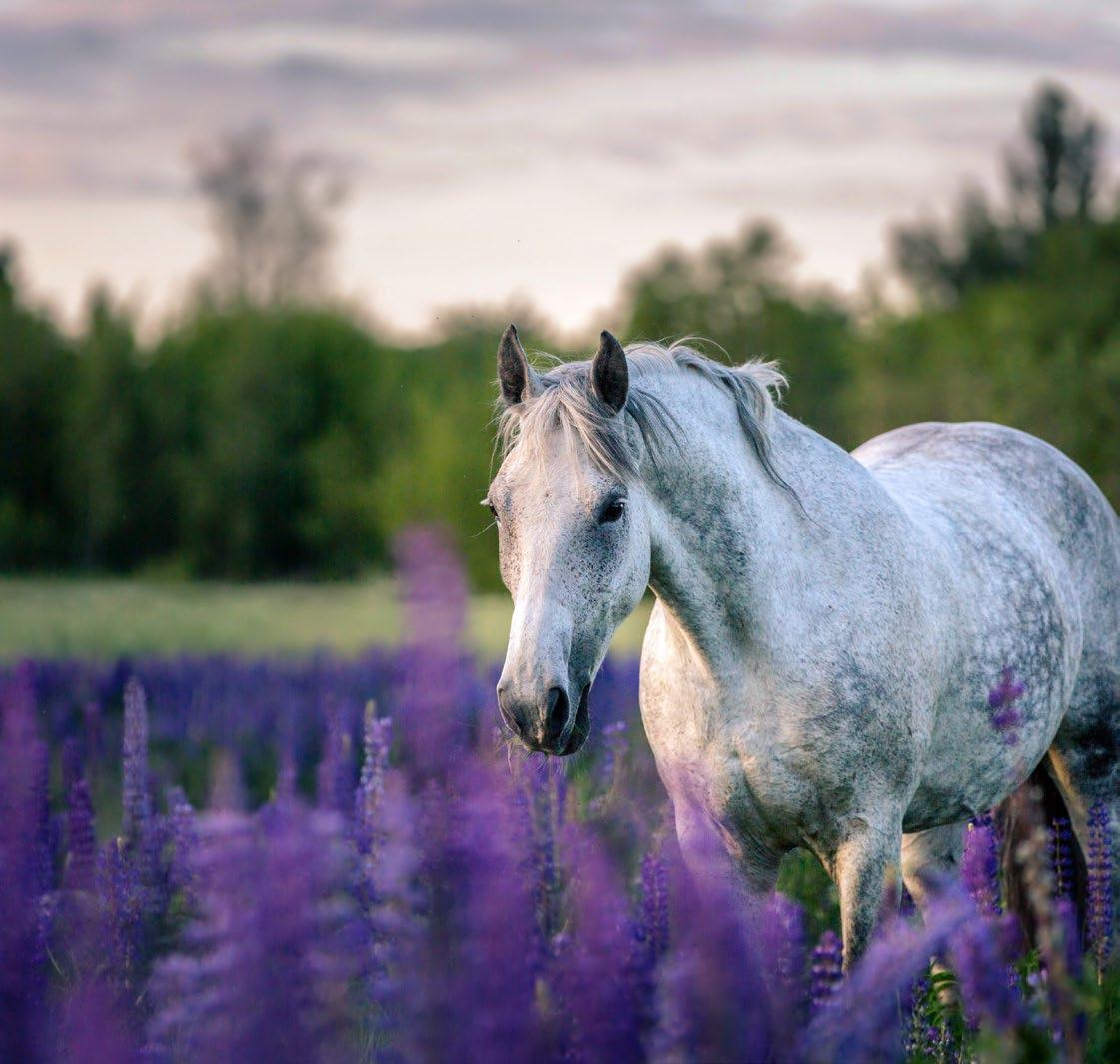

obituaries Obituaries
42 regulars | endurancegb.co.uk
well liked and well thought of. His proudest moment was riding for Wales in 2018 in Scotland for the Home International. On a challenging ride where several combinations were vetted out, he successfully completed the two-day 80km for Wales. He cherished the moment when the always dour Scottish vet finally cracked, on Piers and Gully’s successful trot up, with a ‘well done Piers’ and a huge smile. Piers often spoke of it, and I know it gave him immense pleasure.
However, there was more to Piers than his love of horses. Many will be unaware of his rich history as a successful businessman, establishing and running an oil recycling business before it was fashionable, and opening and running a profitable restaurant. He
eventually retired from business to follow his real passions – writing, reading, travelling, horses and music. Piers was gifted in the creative arts. He had been in a successful band, appearing on the John Peel show, along with giving live performances, and had several CDs issued commercially. He was a talented keyboard player, drummer, singer and songwriter. He wrote several books, comedy sketches and many poems, along with musicals which he loved, although alas they have yet to be performed on stage.
His travels included trips to Jordan, Israel, the United States and most of Europe, often on riding holidays. He had a quick wit and wonderfully wicked sense of humour. On a recent trip to Leicestershire, confronted in the beer garden of a country pub by
Les Spark – 10/2/1946 – 1/4/2023, by Agneta Pallinder
Friends in Endurance GB will perhaps best remember Les as the rider of Magica’s Minstrel (Jasper) and the inventor, manufacturer and fitter of the FnE saddle. But he was also a loyal and supportive husband, an affectionate dad and stepdad and an exciting grandad to nine grandchildren and step-grandchildren, several
Liz Finney
The endurance world was shocked to hear of the sudden death of one of the sport’s icons, Liz Finney. Liz began competing in the 1970s on Show Girl II and the pair were regular fixtures at the Golden Horseshoe in Exford, Somerset, before advancing to international competitions. Liz was a member of the
of whom learnt to ride from him and rode with him at endurance events.
Les’ and Jasper’s highpoint achievement was the first Cairngorm100 ride in 2015, but Les had been very active first in EHPS, then Endurance GB, from as early as 1993. He rode his nervy Thoroughbred mare Tiffany, crewed for me and my Lady Ellany, and joined me in organising numerous pleasure rides in and

unfriendly-looking locals from the cricket team, he picked up a dinner fork and started to play the theme tune to Test Match Special on a tin tray. Instant thaw and merriment all round, he was the hero of the hour. What a clever man, he didn’t even need to say anything.
So polite, self-effacing, gallant and generous with his time, resources and praise, Piers was a true gentleman and gentle giant. It was a privilege to know you Piers and we will miss you.
Piers’ funeral is on Tuesday 6 June at 11.30am at St Michael’s Church in Llanvihangel Crucorney, NP7 8DH. No flowers, but Piers loved native trees so please consider planting one in his memory either yourself or through the Woodland Trust.
around Weardale and Teesdale in the western part of County Durham. Jasper became Les’ principal mount in 2002 and the close friendship between man and horse lasted for 20 years, until Jasper’s death in the autumn of 2022.
The FnE saddle came about because of Tiffany. She was saddle sore from the start and could be a dangerous ride. With his keen engineer’s eye Les saw the deficiencies of the traditional English saddle. Drawing on the old military saddle he constructed a saddle for Tiffany that finally made her comfortable and rideable. Other endurance riders started asking questions and wanting their own saddles converted to the wide, adjustable panels. Such conversion was not often possible, and soon Les was investigating the possibilities of a saddle making business, which eventually became FnE Saddles and Les’ full-time occupation through 20 very happy years. Les was a problem solver and he liked nothing better than putting this skill to the use of customers in Britain, Europe and the US, many of whom became lasting friends.
competitions at home and abroad. In 1996, she rode in California’s 100-mile Tevis Cup, known as the hardest endurance ride in America.
While still excelling in her own competitions, Liz was Chef d’Equipe of the British Endurance team on 14 occasions from 1995-2019. She officiated as an FEI judge in Europe, the US and Dubai, and was President of the Ground Jury at the World Championships at Euston Park in 2012. Liz was also Chair of the British Endurance Riding Association (BERA) until 1991 as well as being chair of the Cheshire Endurance Group, which she founded in 1991.
British team at the first European Championships in France, then won an individual silver medal the following year in Germany. In 1990, she was a team gold medallist at the World Equestrian Games in Stockholm, Sweden. Following Show Girl II’s retirement, Liz had great success on the family’s partbred Thoroughbred, Carland Venture, in countless
Liz’s funeral was held on Monday 3 April at 4pm at the Birches Remembrance Park, Lach Dennis, Cheshire and her family requested live flowers or donations to Pancreatic Cancer Research. A fundraising page has been set up in her honour. https:// togetherinmemory.pancreaticcancer.org.uk/ In-Memory/Liz-Finney

obituaries 43
Revving up for
Red Dragon
We find out more about this year’s Red Dragon and talk to riders and the team behind the scenes to discover why this prestigious event is a must on every endurance rider’s calendar.
This year, The British Horse Feeds’ Red Dragon Festival of Endurance and the Wales Endurance Team are pleased to jointly host the Golden Paste Company’s Home International competition. The organisers of the Festival are very grateful to the Golden Paste Company for their support as title sponsors of the Home International for the first time this year.

The Golden Paste Company’s Home International is a friendly competition which is run on an annual basis in each of the four countries – England, Ireland, Scotland and Wales. Each country takes a turn at hosting the event. Make no mistake, it’s a hotly fought contest but lots of fun. Each team consists of 12 riders with two additional travelling reserve members.
The venue for the Red Dragon Festival is the Royal Welsh Showground in Builth Wells, Powys, home of the well-known Royal Welsh Show. Riders from all over the country
are invited to join us at the Festival on 29 September – 1 October, to enjoy superb riding, the excellent facilities at the showground and the special atmosphere that is associated with the Home International.
The facilities at the showground continue to improve every year. We have over 300 on-site stables in a purpose-built stable block, huge areas for parking and camping, day-corralling, proper loos and showers, large crewing areas close to the finish, taps everywhere, two bars, catering van, evening meals in an on-site restaurant and many trade stands under cover adjacent to the ride office. There are also many good pubs and restaurants in the surrounding area where time can be spent relaxing in the evenings.
All these facilities are pulled together to offer Endurance GB’s members and supporters the opportunity to come to Mid-Wales to enjoy a long weekend of riding at the end of the season. Riders can choose to ride on one, two or three days, whichever they choose. Distances of 26km, 34km, 44km, 55km, 66km and 80km are available over the hills and plateaux to the east and southeast of the venue, with views that must be seen to be believed. Special classes over two and three days are also available. For
full details see the calendar entry on the EGB website.
Over to the competitors…
Aimee Grainger, from Mansfield, Nottinghamshire
“Red Dragon is an absolute ‘must do’ ride for any endurance rider. Although I’ve never done big mileage there (yet!), I have been fortunate to ride at Red Dragon a couple of times, as well as crewing. It’s a really special ride with a fantastic atmosphere of camaraderie and sportsmanship, and there’s nothing quite like the view from the top of ‘The Hill’.”
Nikki Malcolm, from Whitcombe, Dorset, is the winner of five 160km CERs at the Red Dragon
“Red Dragon, hosting the Home International, is the place to be this year! The Welsh as hosts are so proud and patriotic that the whole place gets an extra kind of magic feel to it. Everyone is made to feel welcome, from pleasure riders to those taking on the challenge of the bigger distances. All are rewarded with spectacular views and amazing going across land with hundreds of years of rural Welsh farming history to it, with Welsh pony herds and golden
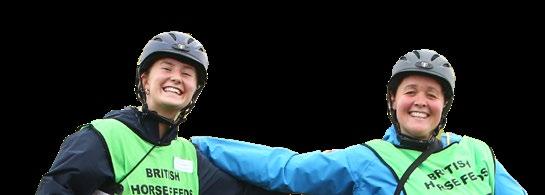
red dragon features | endurancegb.co.uk
Red Dragon
44
David Saunders
heather. The ride may only last two or three days, but the memories last a lifetime. It’s an addiction and you’ll be back for more!”
Georgina Vaughan, from Hay-on-Wye, Powys, second place in the 160km CER in 2022
“Crossing the finish line in Builth after riding 160km over the Welsh hills at Red Dragon was truly magical and a memory that will last a lifetime. The views are incredible, and the going is fantastic. The weather is unpredictable, but the sense of achievement is priceless! Whether it’s 30km or 160km, it’s the perfect way to end your season. The challenge is worth the journey for anyone!”
Amber Boiles, from Leamington Spa, Warwickshire, Top young rider winner of the Dragon’s Claw at Red Dragon, 2022 “2022 was my first year competing at endurance, and I’d heard that the Red Dragon was one of the best rides in which to take part. I had also heard that a lot of people are put off as it is deemed to be too challenging. I can honestly say that those people are missing out. This event starts in the Welsh Showground, which has fantastic facilities and a local pub on site. The routes do have hills (it is Wales afterall), but they are accompanied with the most stunning views that you will ever find on a ride. Couple that with a friendly atmosphere, I would encourage every endurance rider to participate in this ride.”
Mary Stubbs, from Lyndney in Gloucestershire
“I have counted the years I’ve ridden at Red Dragon and it’s at least 13, plus crewed family and friends on other occasions too. So, I guess you can say it’s a ride I love. I have done everything from Pleasure Rides, novice, open and advanced graded rides and the longer distance CERs incorporating three different on course vet gates! There is a variety of routes to suit all levels. Last year I finally completed the two-day 160km, a long-held life goal. It was amazing!
“It’s not always easy riding in the mountains. The hills, both up and down, need respect but are hugely worth it. Take a moment to look around when you get up the first hill, especially if there is mist over the valley. It’s magical. Once up, there are long stretches to canter along with the world at your feet, or your horse’s hooves at least!
“John and Jane have worked tirelessly to improve the route over the last few years and have done an amazing job. I particularly like the loop from the Painscastle vet gate out over the Begwyns, with the new addition we had last year through farm fields to avoid some roadwork.
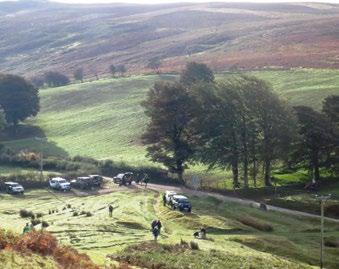
“The atmosphere at the ride is always brilliant, everyone wants everyone to succeed. The showground provides good stabling (again much improved recently) and access to the great indoors as well. Sachiya and I plan to be back this year. I hope you can join us!”
Loyal support
Long-standing title sponsors, British Horse Feeds (BHF) and The Golden Paste Company (GPCo), are set to support another year at the Red Dragon Festival of Endurance. They are also thrilled to announce that in addition to this, they will be the title sponsor for the Home International.

Branca Gebbie, Business Manager for British Horse Feeds and The Golden Paste Company said: “We are delighted to be supporting John Hudson and the team for another year. The commitment from the organisers and volunteers is undeniable and it is our pleasure to be able to continue sponsorship. Our products from the BHF range are ideal fibre feeds for slow-releasing energy and rapid hydration, that paired with TurmerAid which supports inflammation and TurmerItch to keep those pesty flies away are a great feeding and supplement combination for the endurance discipline.”
There is no doubt the team at British Horse Feeds and The Golden Paste Company immerse themselves in the event. The company’s Customer and Sales Coordinator, Hannah Kitching, added: “Last year, I was lucky enough to be asked if I would like to experience the event first hand by being part of a crewing team, helping a horse and rider complete the gruelling Speedi-Beet Red Dragon ride over 160km. Although I have ridden since the age of four, endurance riding was something I knew very little about. Wow, what an experience! It was just amazing, and I loved being part of their team. It was slightly stressful at certain times, crewing is a crucial part of endurance riding as you are helping to provide care for both the horse and rider, ensuring they have a
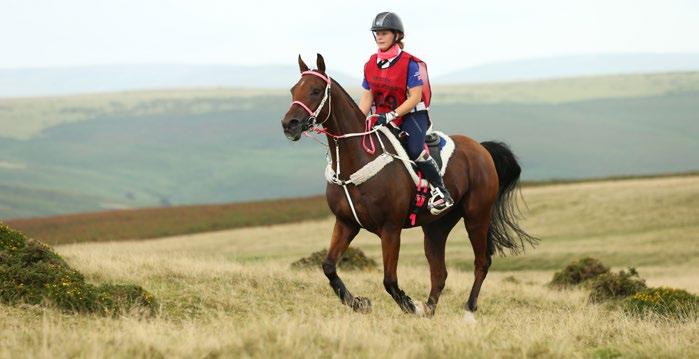
successful ride. Charlie and Liz were both great and I will be forever thankful to them, and the event organisers for giving me the opportunity to experience crewing. It is something that I will not forget.”
Find out more
So, why not spend a weekend away with a Dragon? For more details of the British Horse Feeds’ Red Dragon Festival of Endurance, keep an eye out on Endurance GB’s event calendar for the online briefing and Q&A sessions the organisers are planning during August and early September. There will be an opportunity to learn more about the facilities at the venue, the classes that are available at the event, the route, crew points and the facilities in the neighbouring villages. Watch out and sign up for the events called ‘Spend a weekend away with a Dragon’.
red dragon
45
Georgina Vaughan riding Vlacq Journeyman
David Saunders David Saunders
Endurance GB Winter League results 22-23
Although we had a smaller entry than we would have liked for the inaugural Winter League for Endurance GB, we have had some very high-quality entries. Thank you all for supporting the league and well done to all horses and riders for some great results over some varied disciplines. As well as dressage these included show jumping, group rides, webinars and pole clinics.
The results are below, and personalised rosettes, sponsored by Julie Jones, will be on their way as soon as possible. The autumn issue of this magazine will give information on the 2023-2024 Winter League and how to get involved. Well done again to all who took part.
Group Placings
(addition of all marks from both sections for group):
Section 1 Dressage: Section 2 Performance:

winter league reports | endurancegb.co.uk
Winter League
Name Horse Group Points Placing Sam Dickinson Mr Peacock Mid-South 76.5 1 Esther Groen Watt du Colombier Heart of England 42 2 Sue Rich Oakleaze Farm Czelecta Offas Dyke 33 3 Louise Rich Oakleaze Farm Maz Offas Dyke 30.5 4 Claire Quinney Beatrice Wessex 20.5 5 Virginia Rider Growl South East 20 6 Louise Rich Oakleaze Farm Czelection Offas Dyke 19 7 Louise Rich Kirkleigh Offas Dyke 12 8 Virginia Rider Kings Future South East 9 9 Name Horse Group Points Placing Caroline Pitt Calico De Cymru 213 1 Susan Hawes Sarukh South East 132 2 Virginia Rider Growl South East 99 3 Alice Reeves Dazzling Star Wessex 65 4 Camilla Erskine Midnight Revel Lightning South East 40 5 Carina Kane Treswarrow Cecil South West 32 6 Virginia Rider Kings Future South East 28 7 Sue Rich Oakleaze Farm Czelecta Offas Dyke 20 8= Louise Rich Oakleaze Farm Maz Offas Dyke 20 8= Jenny Blackwell Money First South West 16 10 Alison Sandford Elyassaat South East 11 11 Group Name Points Placing South East 339 1st De Cymru 213 2nd Offas Dyke 134.5 3rd Wessex 85.5 4th Mid South 76.5 5th South West 48 6th Heart of England 42 7th 46

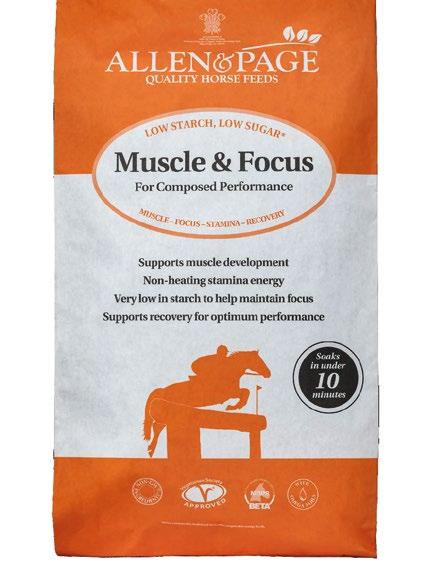
Muscle & Focus For Composed Performance • Quality protein and antioxidants including vitamins C and E to support muscle development and recovery • Low starch and sugar* gives controlled energy without the fizz • High fibre and oil ingredients - easy to digest • Contains magnesium carbonate and calcium carbonate to help buffer the acid contents of the stomach • Contains a probiotic and a blend of prebiotics for healthy digestion • Fully balanced with vitamins and minerals** Contact our award-winning helpline for more information and nutritional advice on 01362 822 902 or email helpline@ allenandpage.co.uk www.allenandpage.com * When compared to traditional diets with comparative energy levels **When fed at the recommended levels for bodyweight and workload Gubby Leech and Liberto D
Proudly





















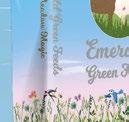

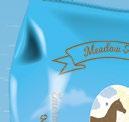






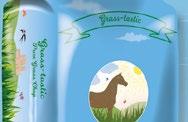






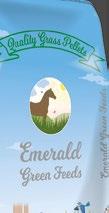





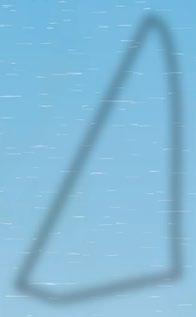


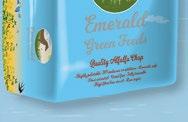




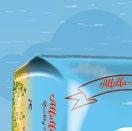



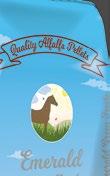






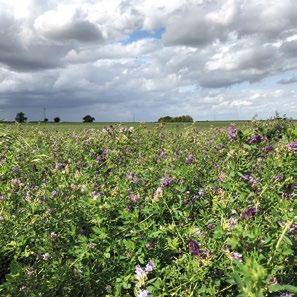
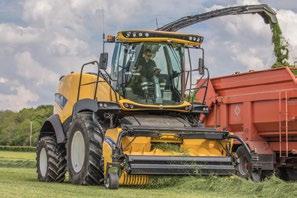
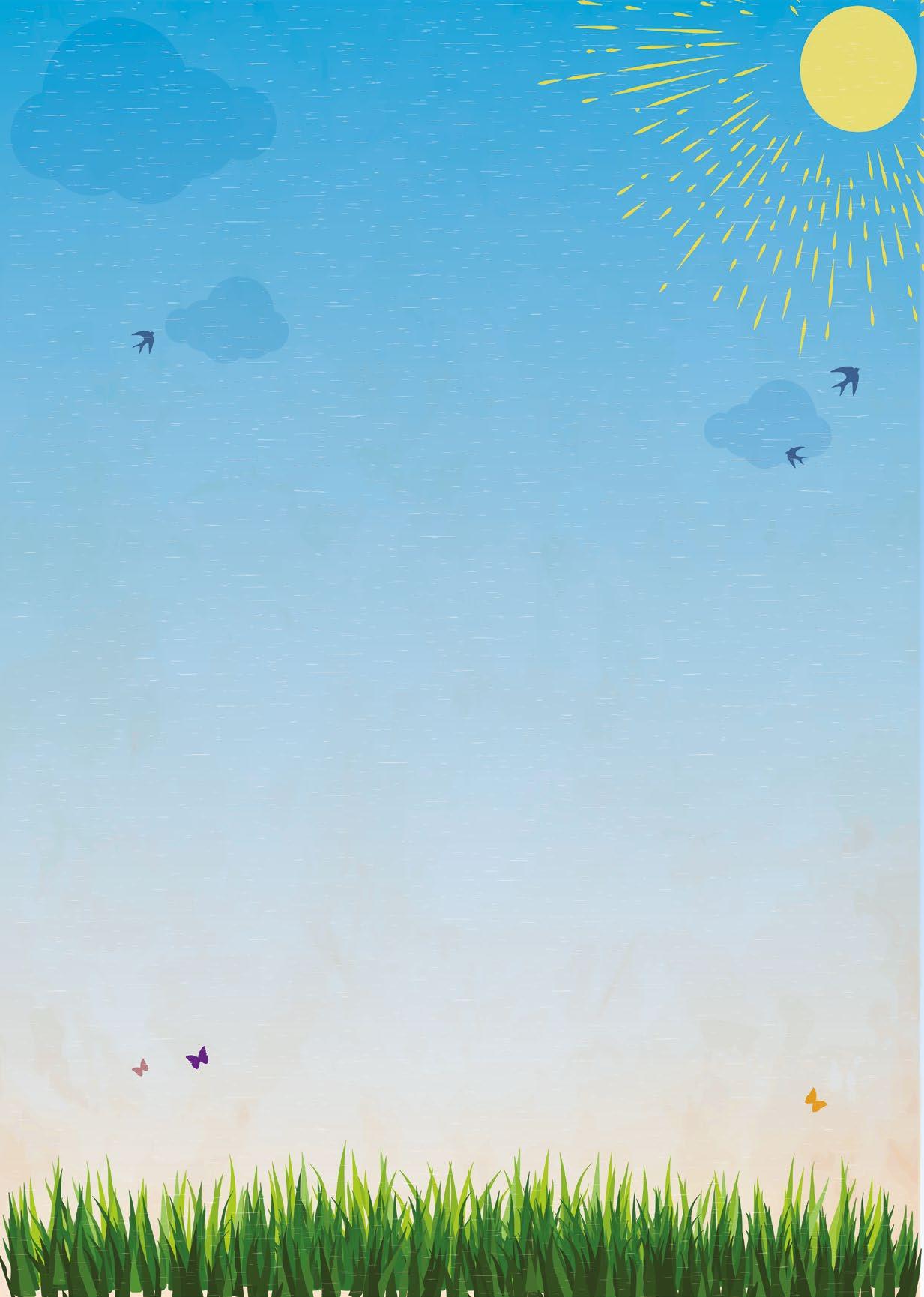
as nature intended emeraldgreenfeeds.co.uk
Feed
celebrating 10 years of producing high quality, natural forage feeds for all your equine and grazing animal needs.
















































 Submitted by Nicola Thorne
Submitted by Nicola Thorne


















 Druimghigha Shemal
Druimghigha Shemal





















































































































